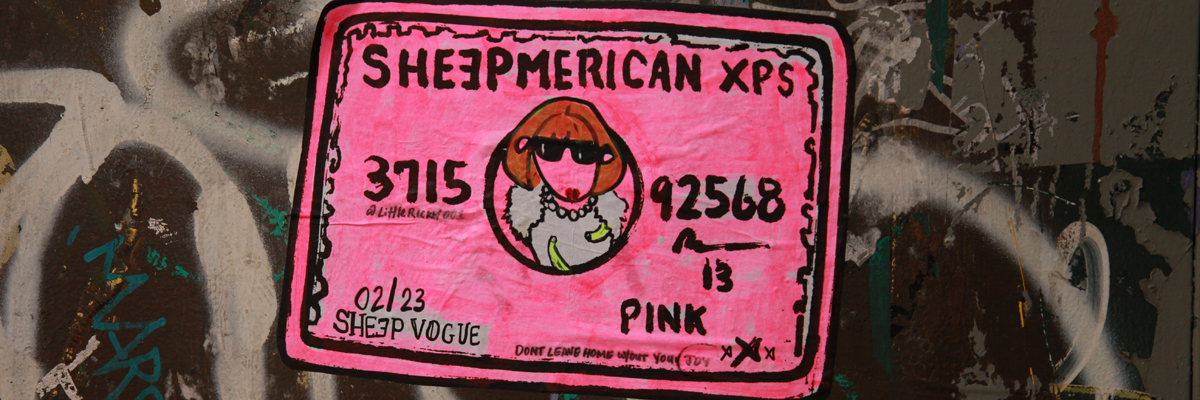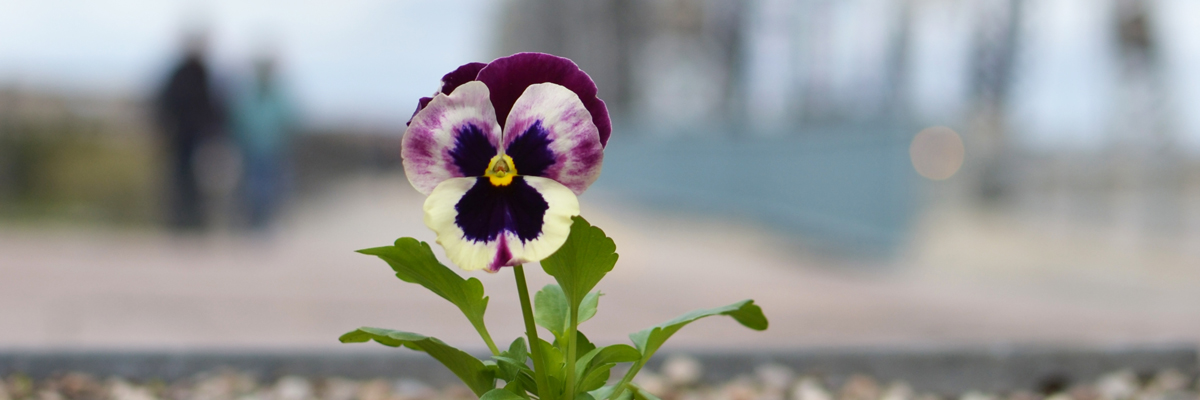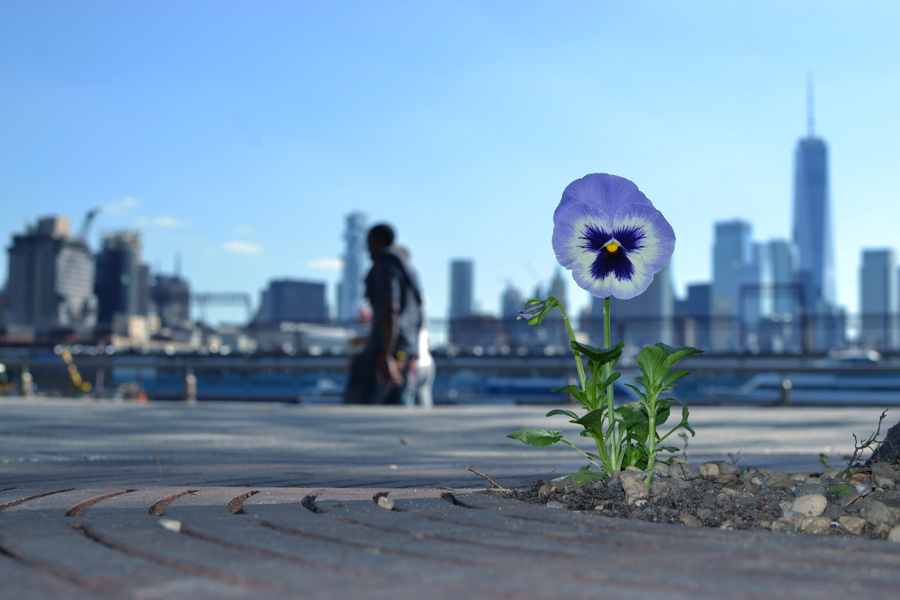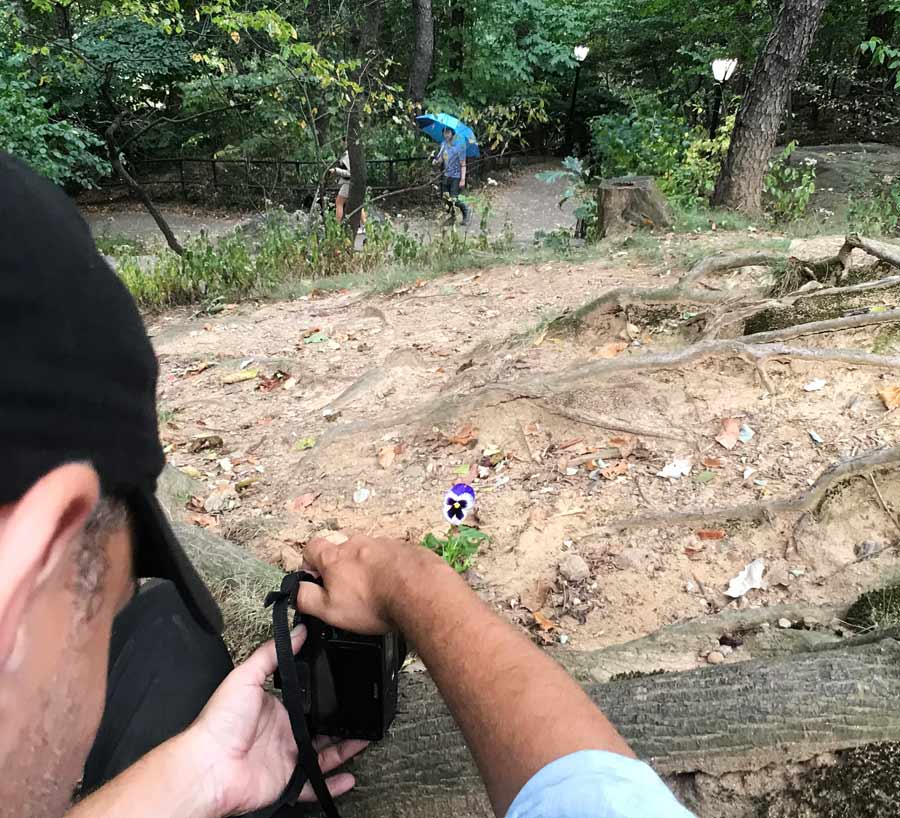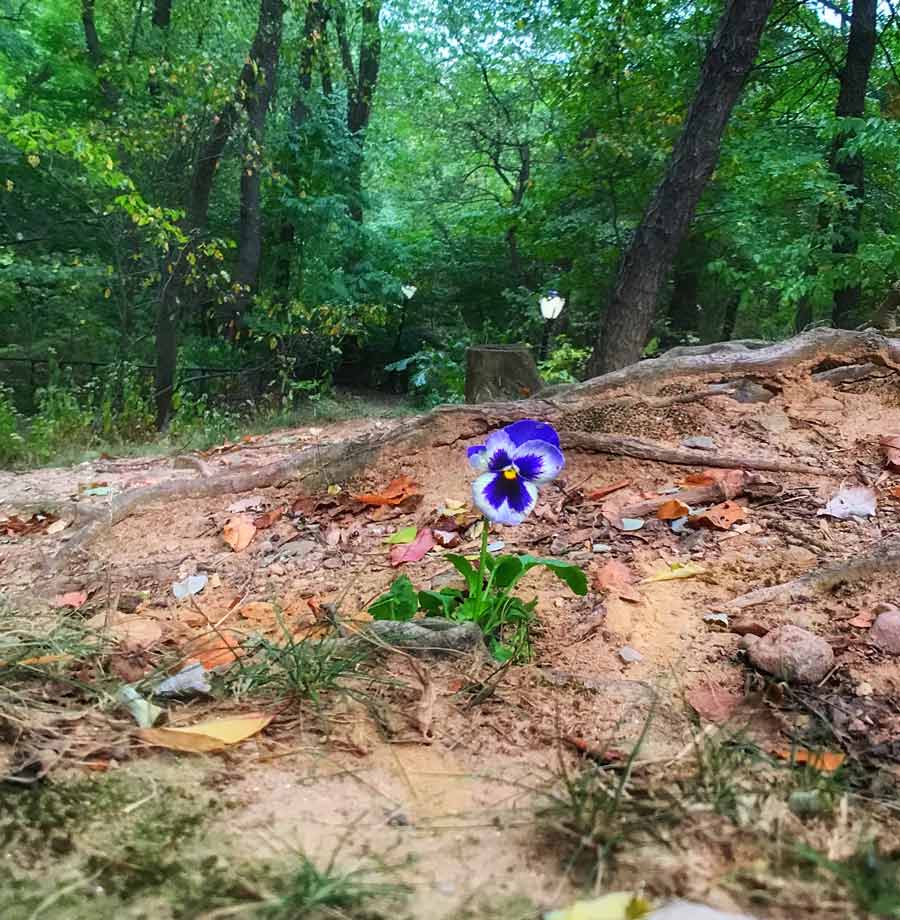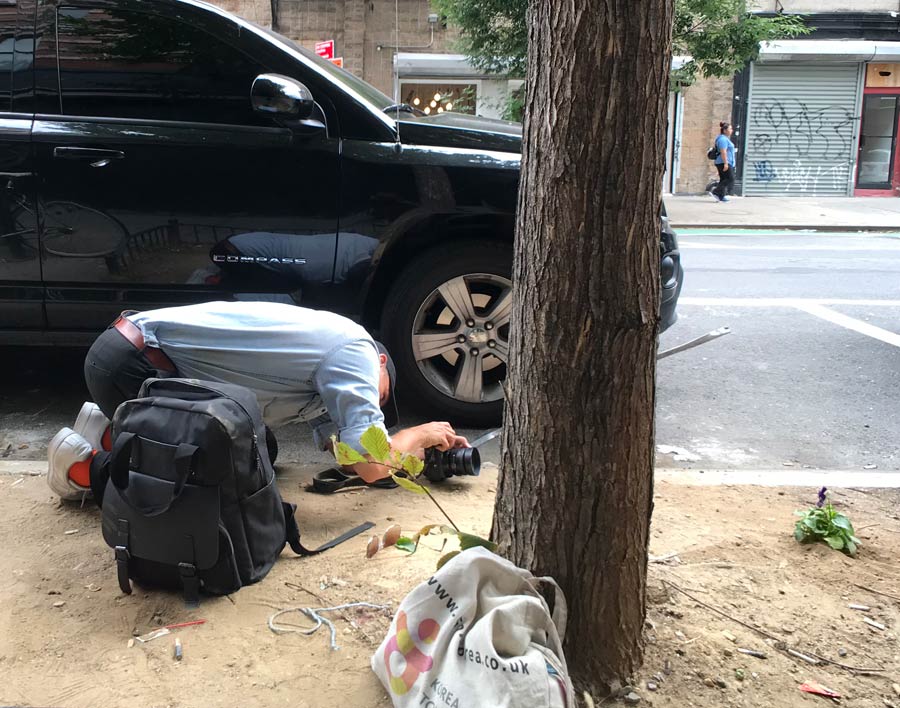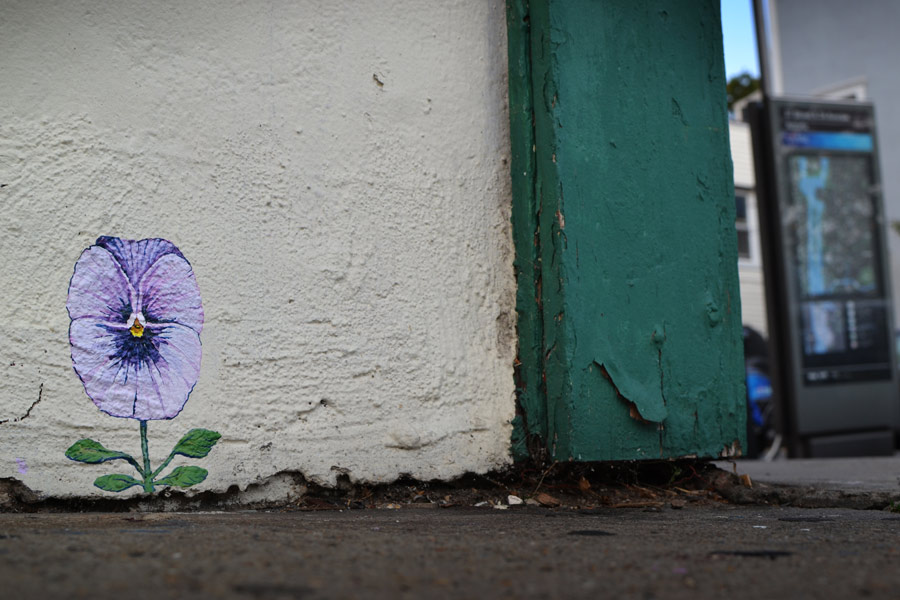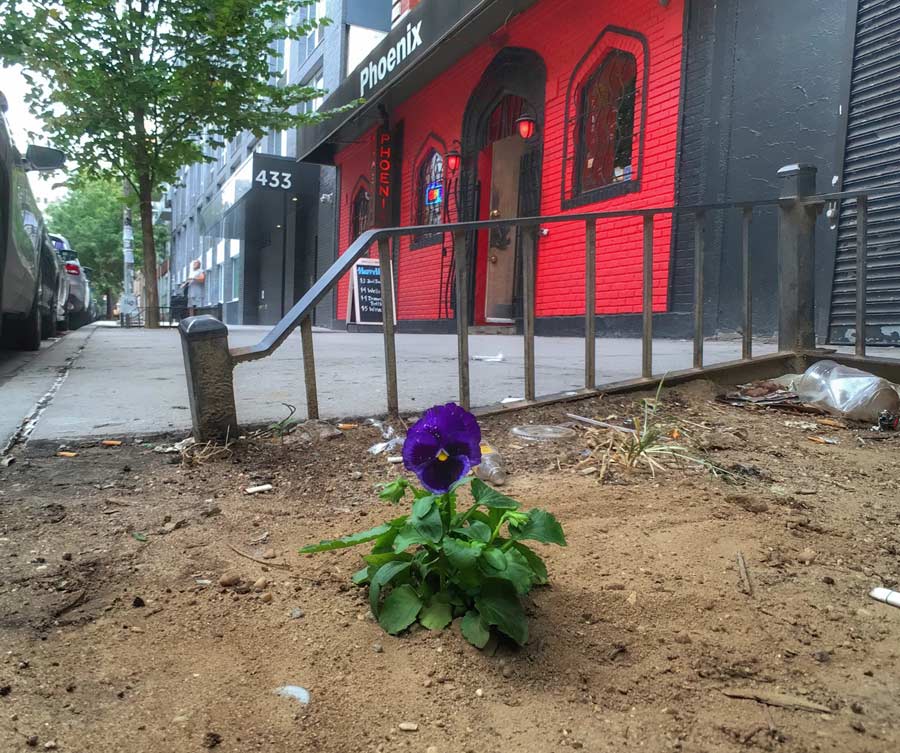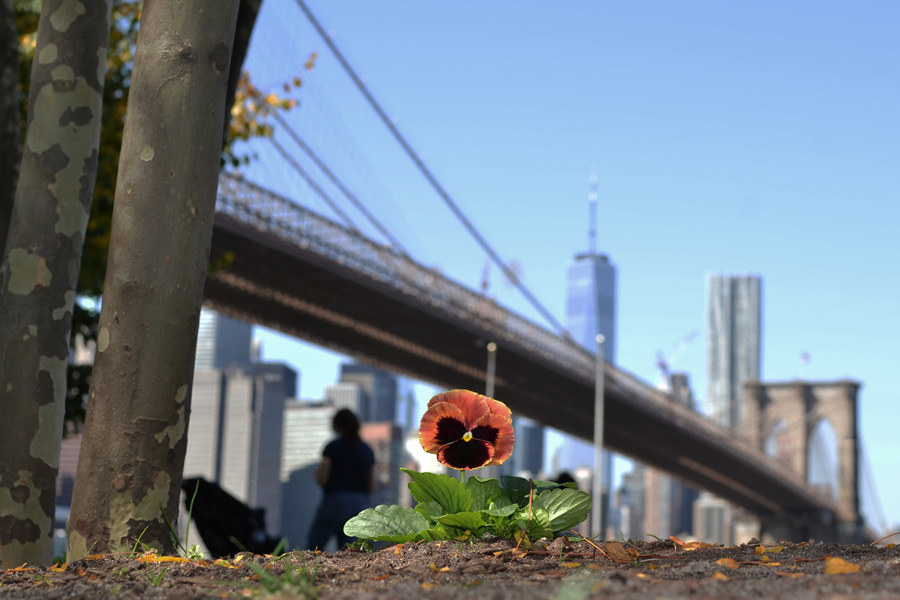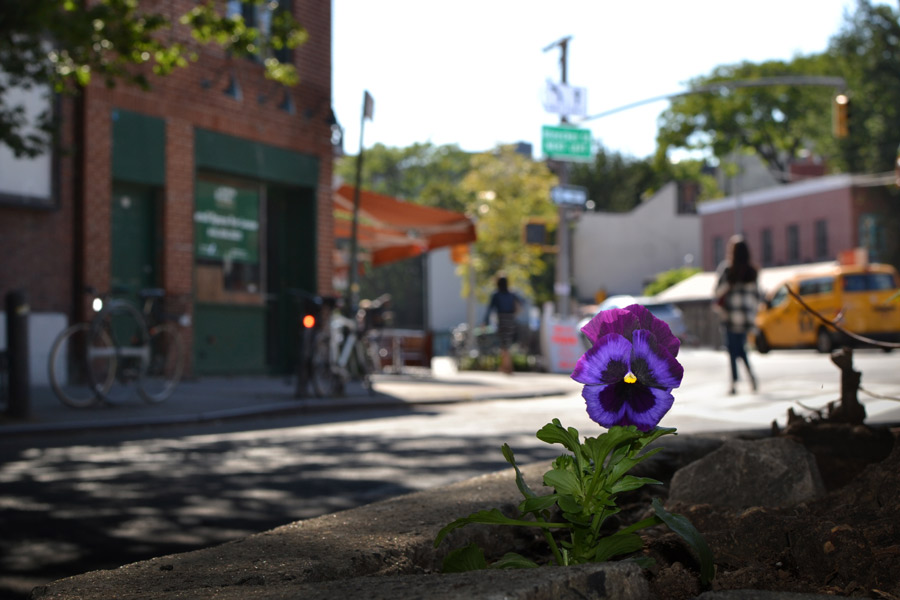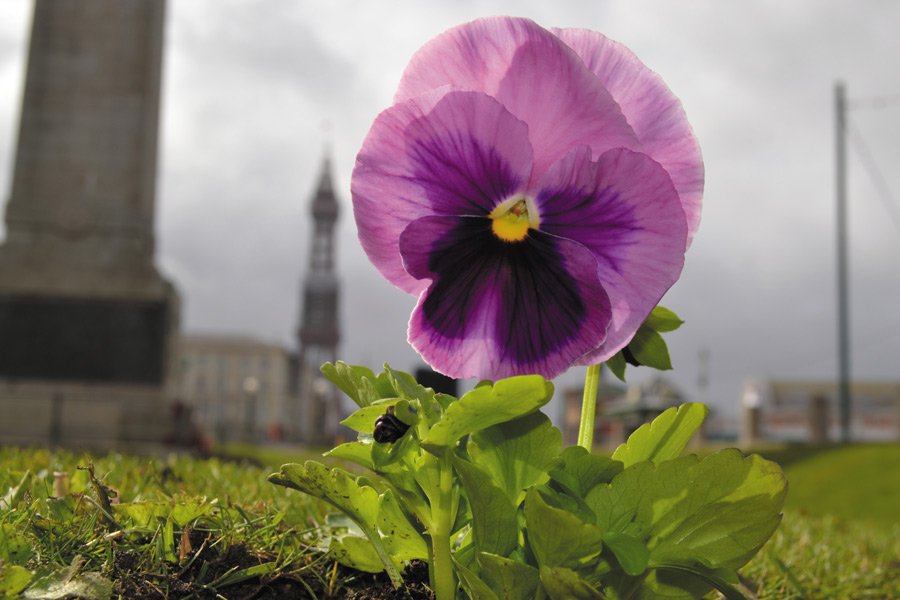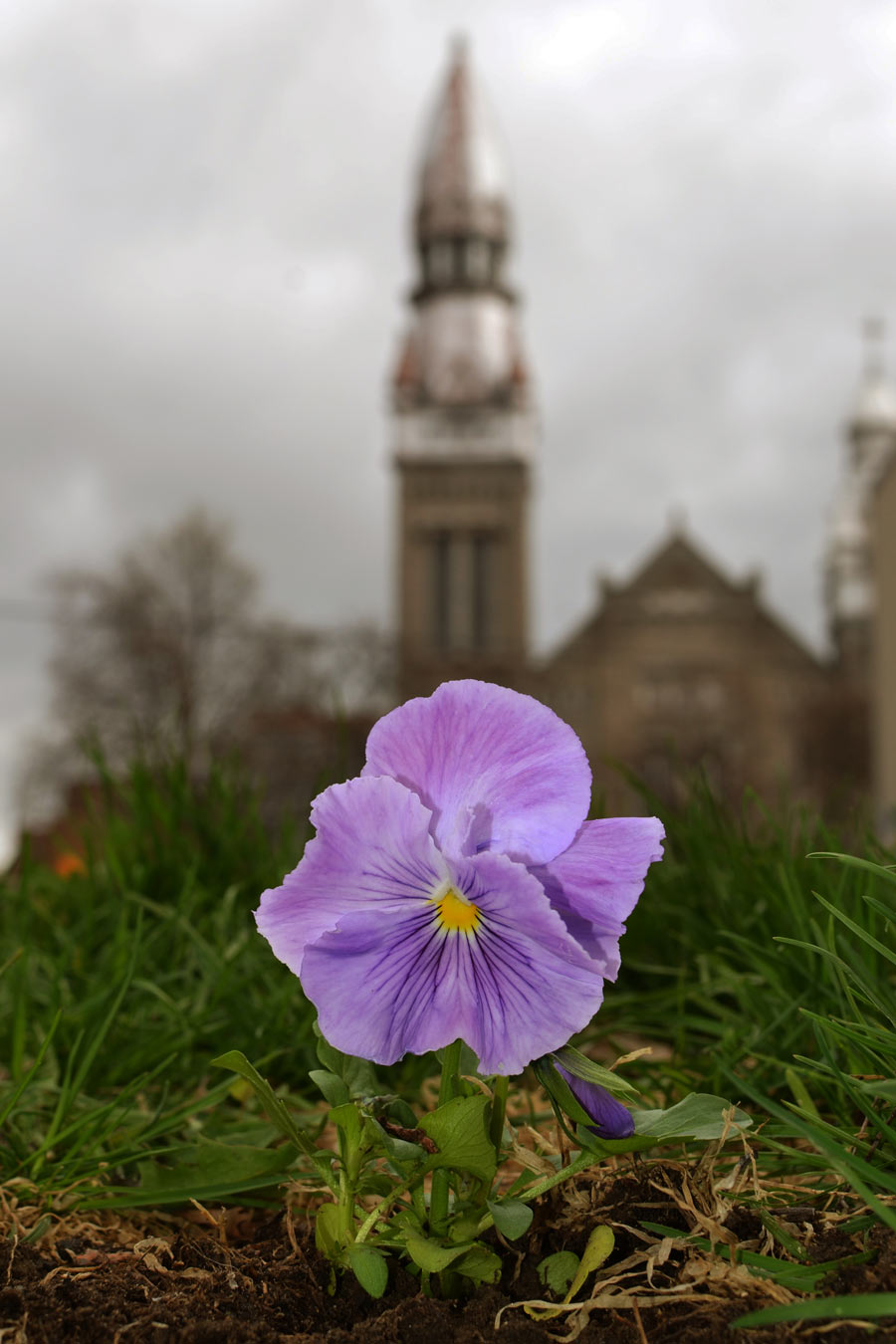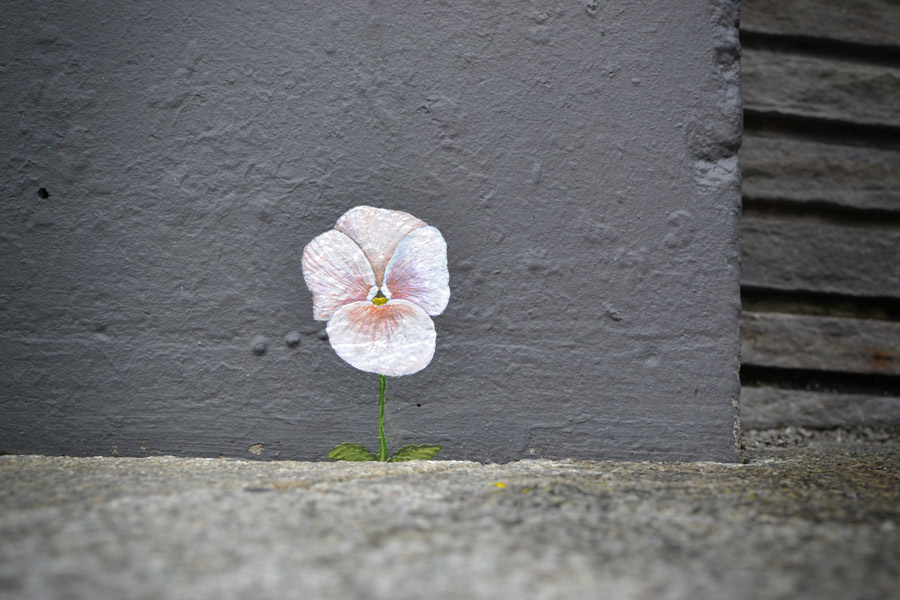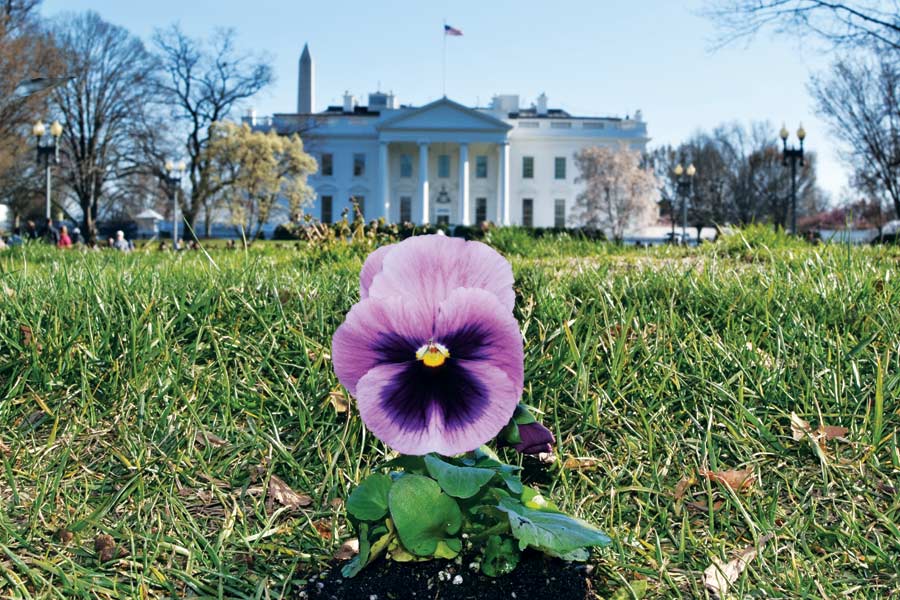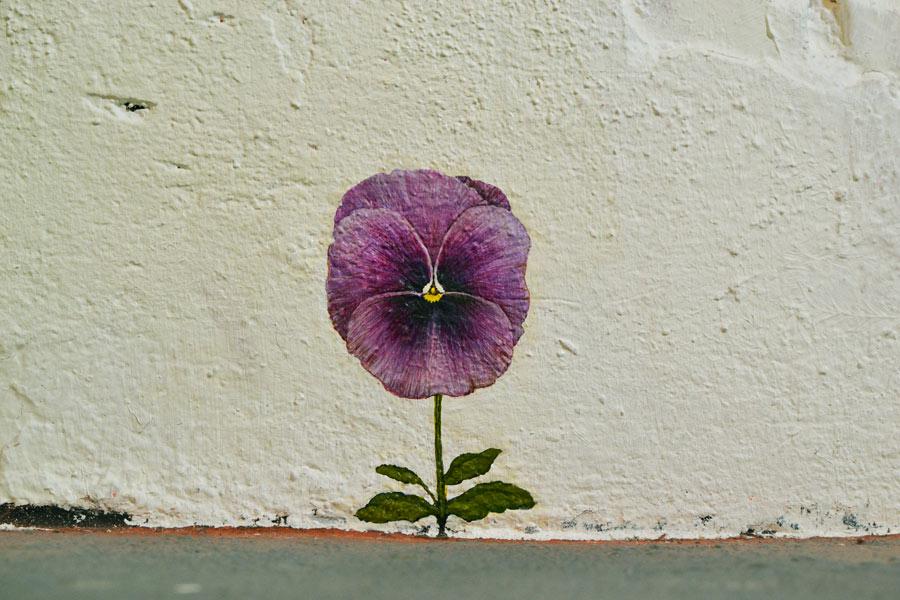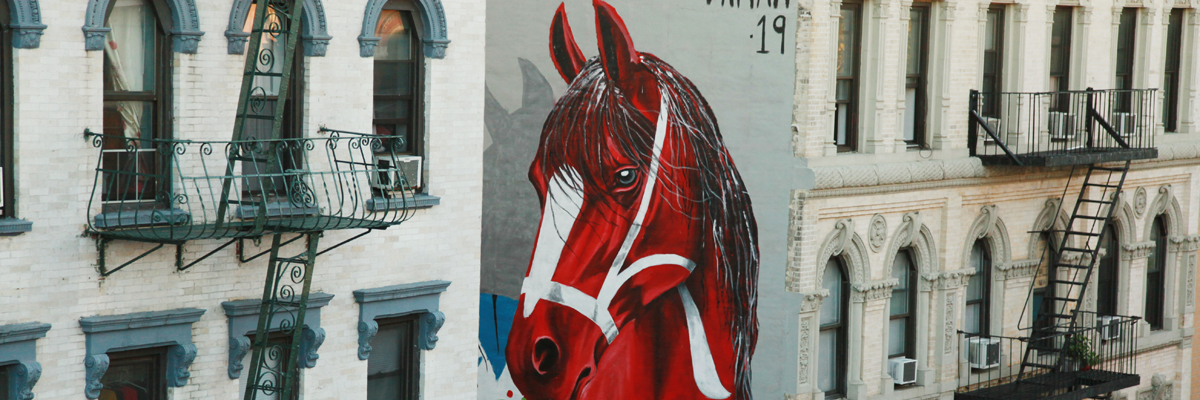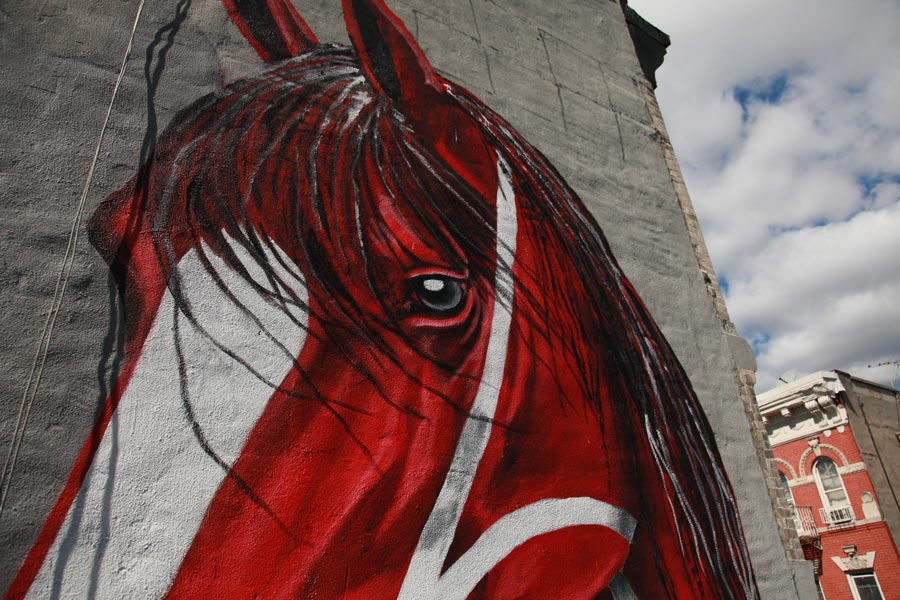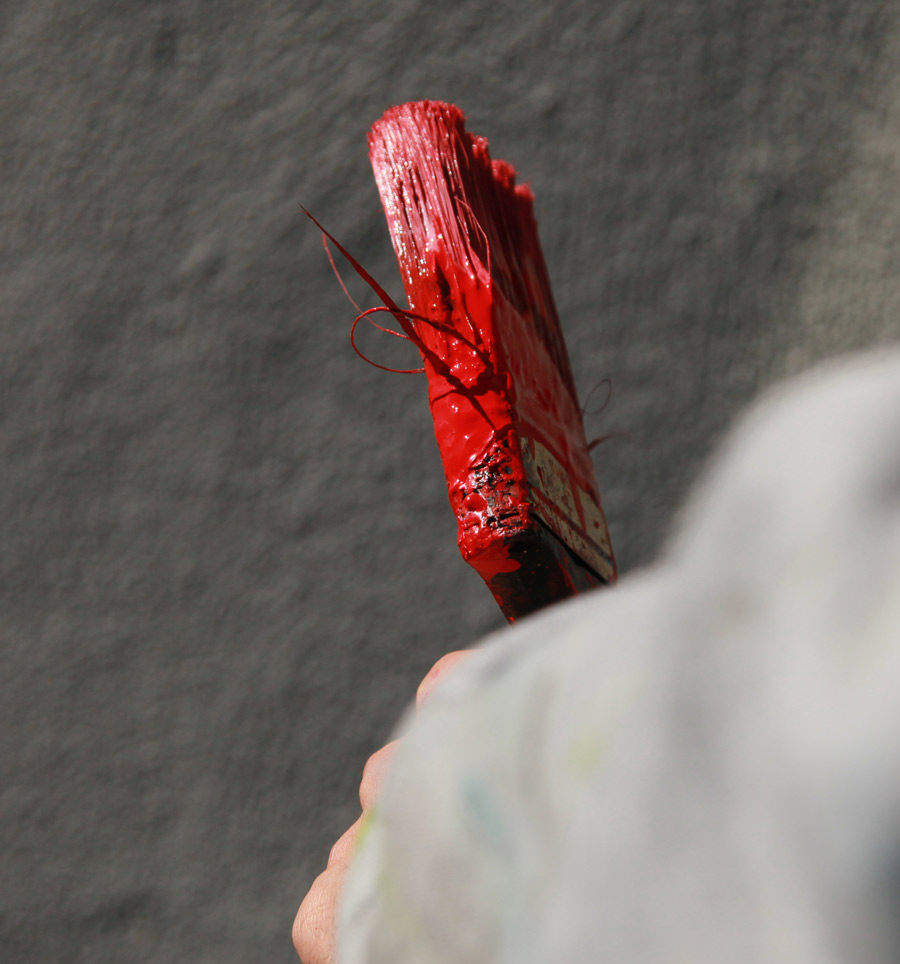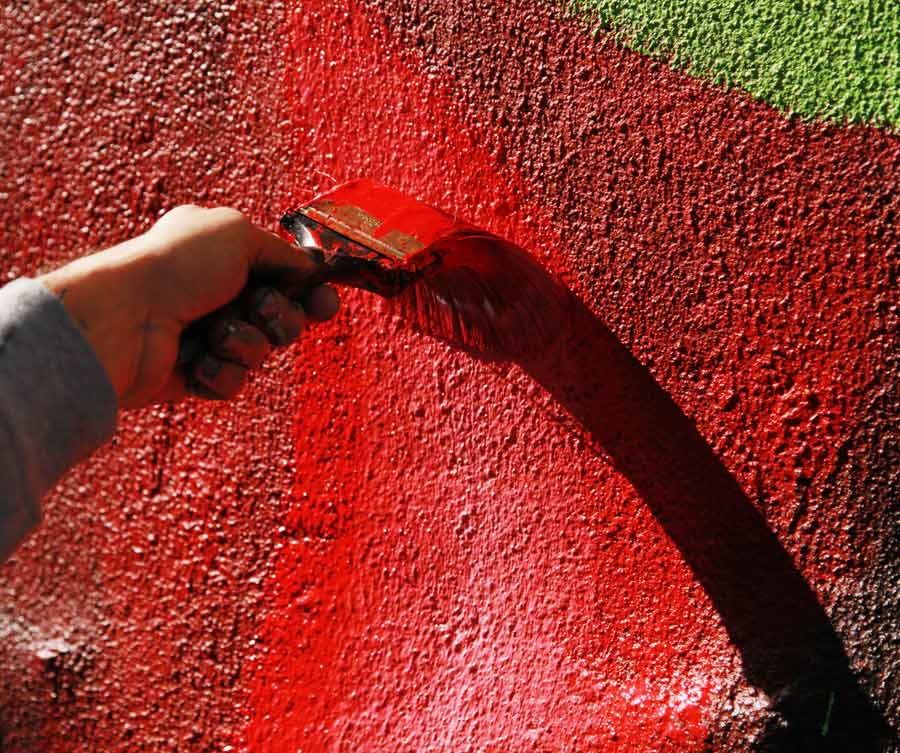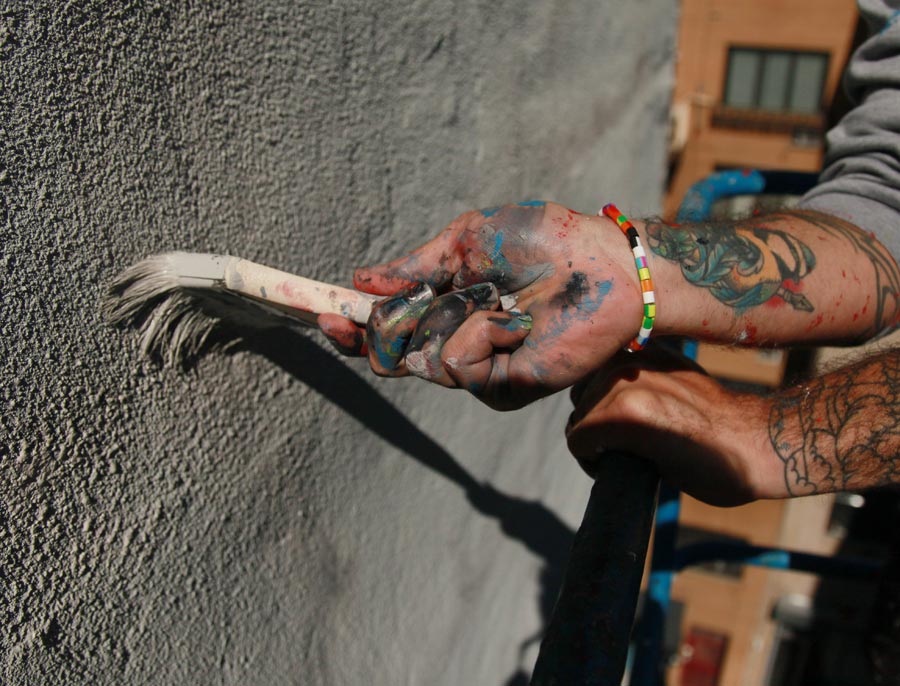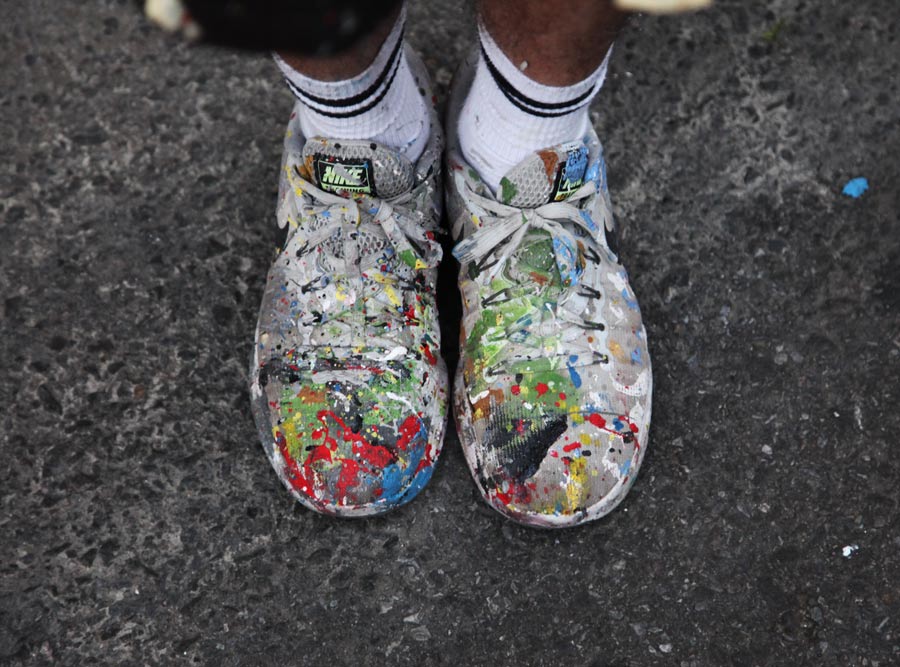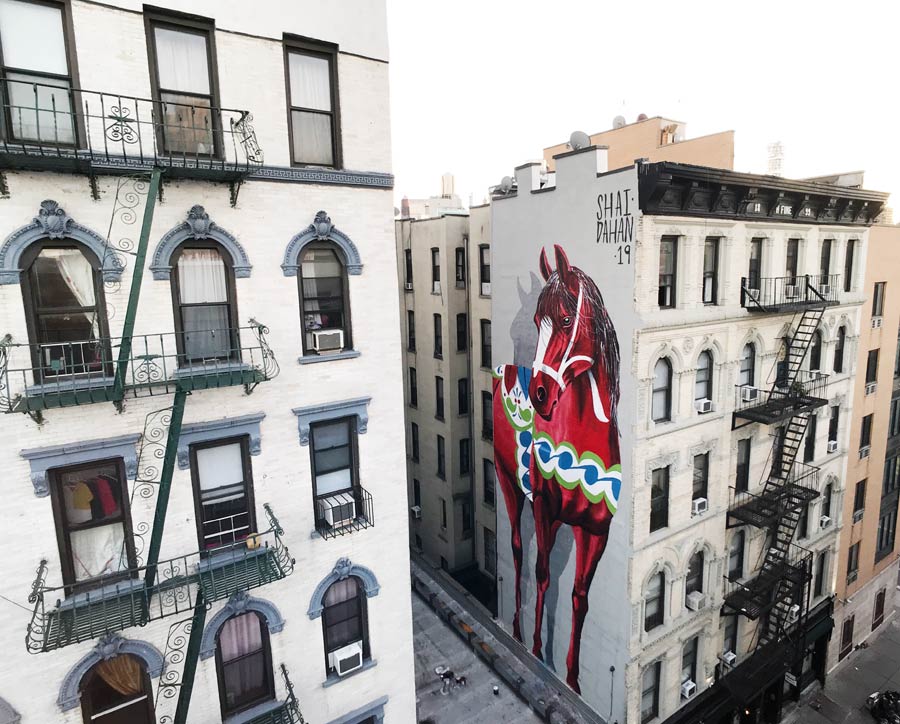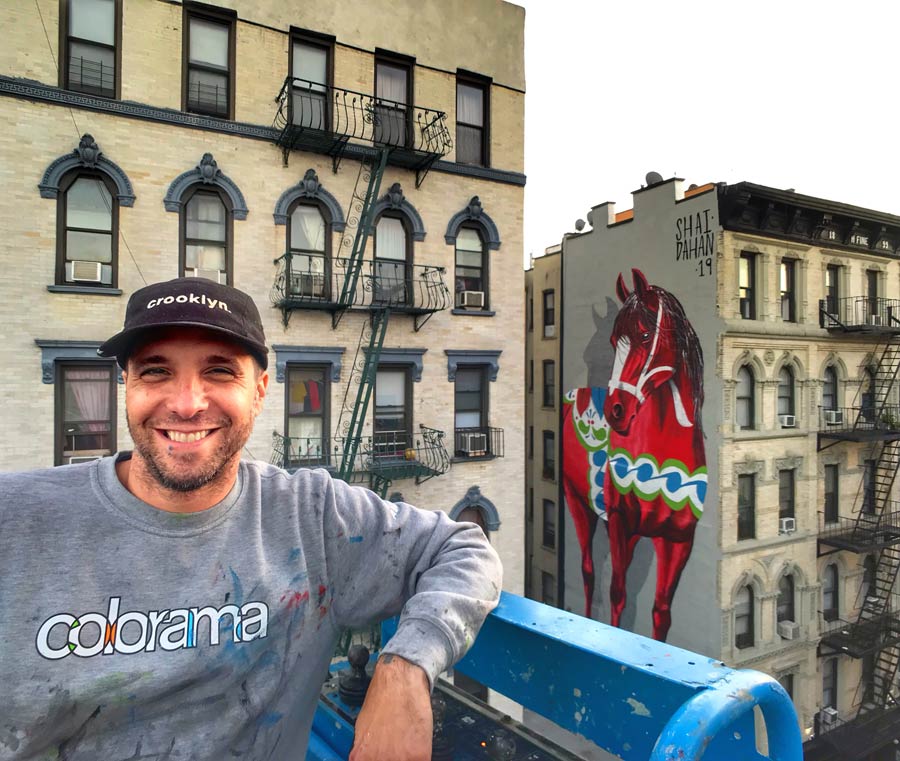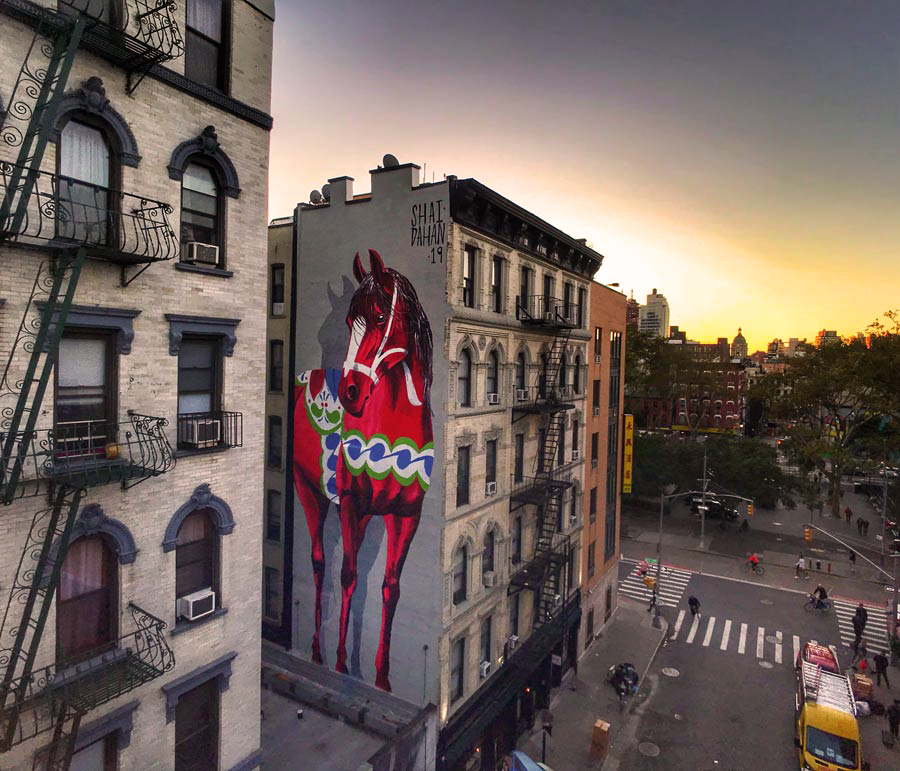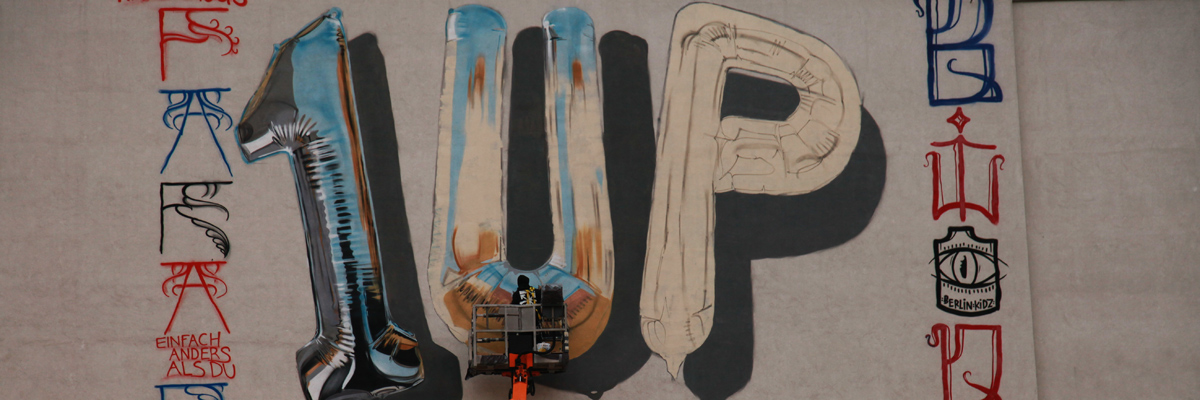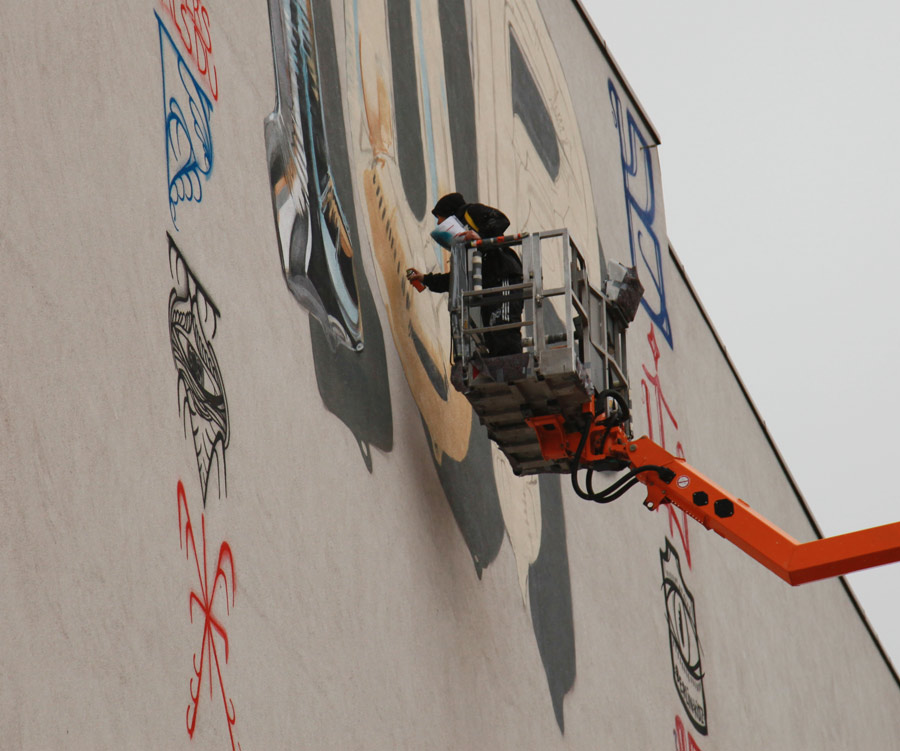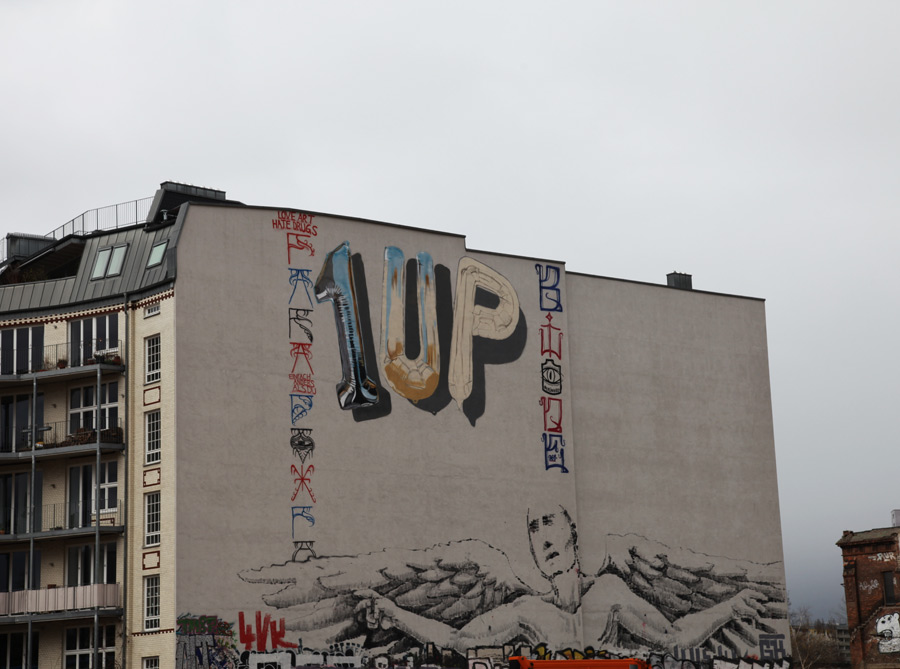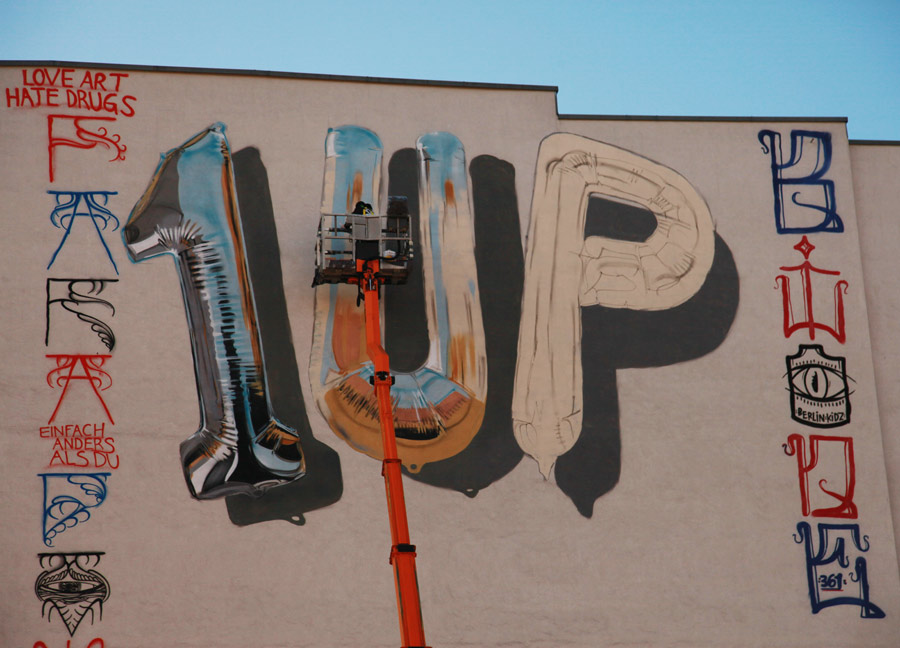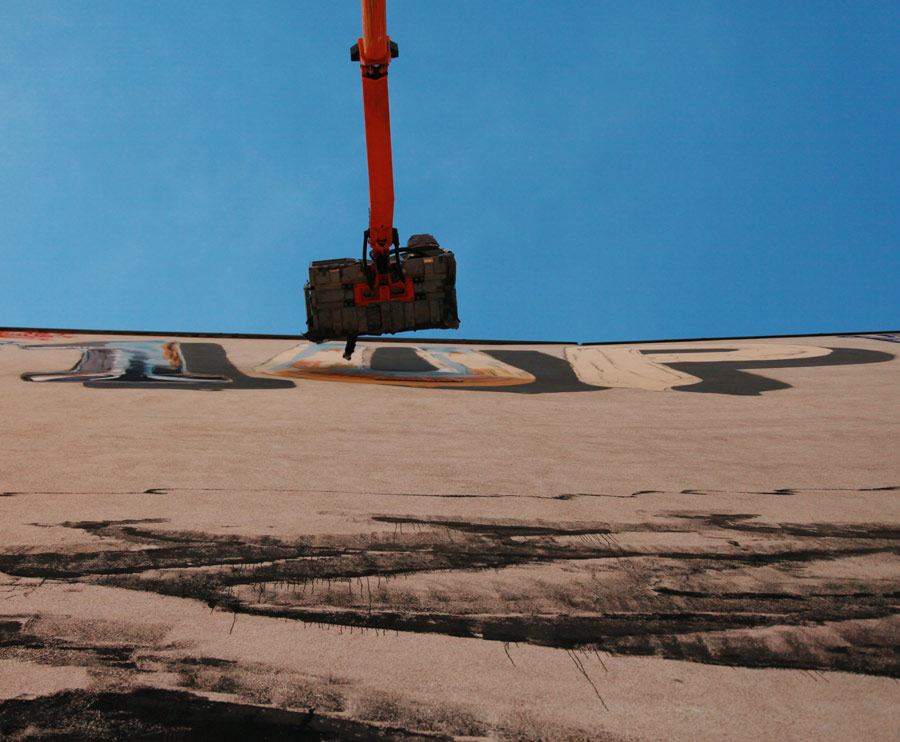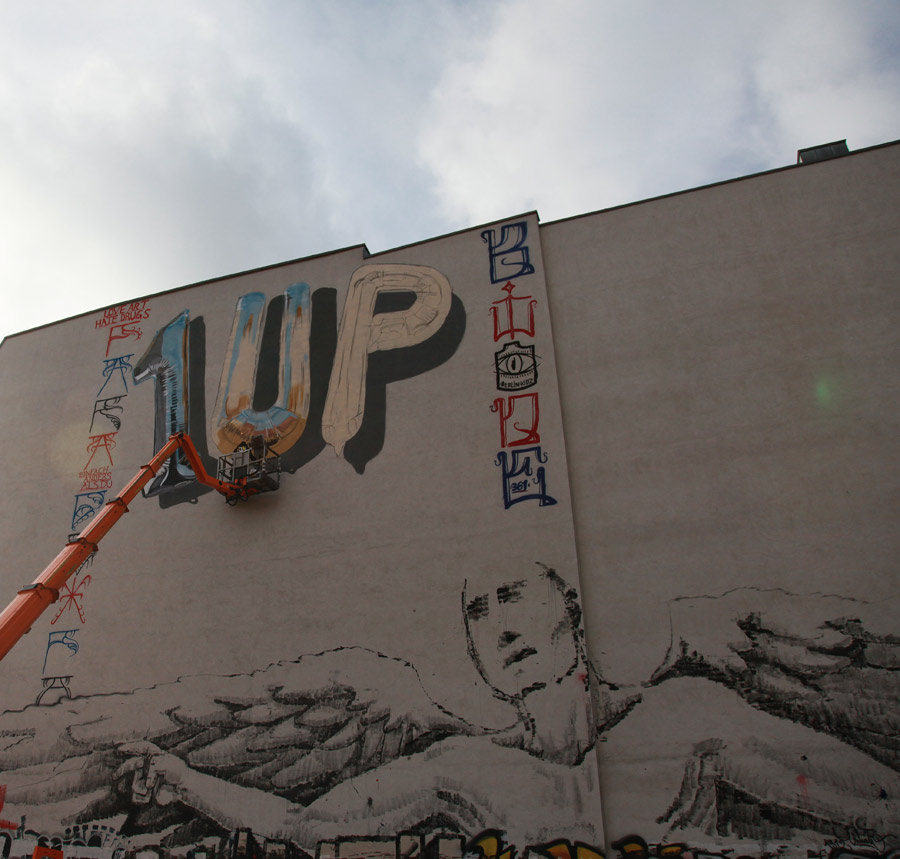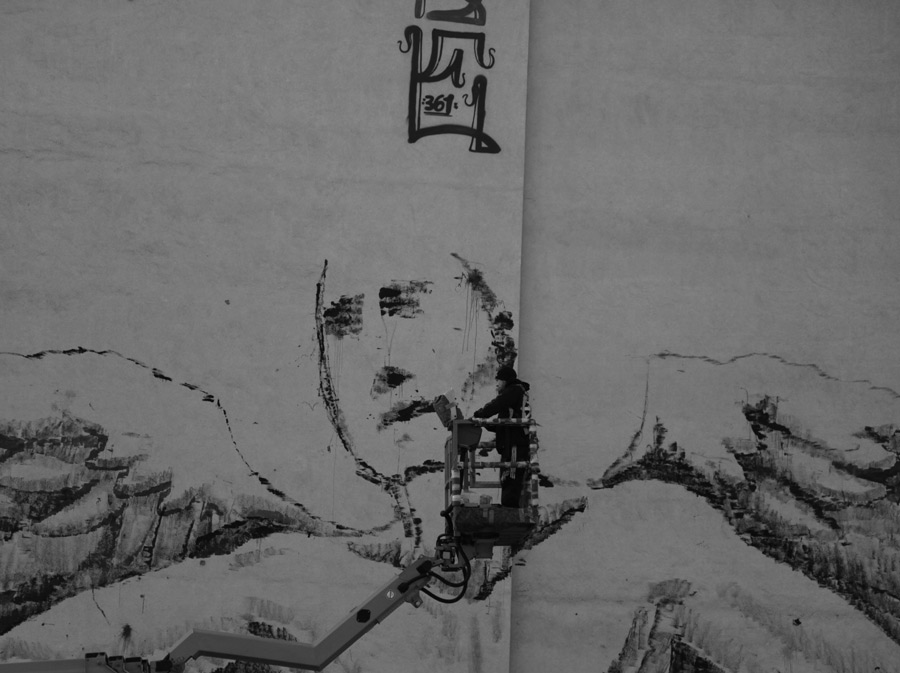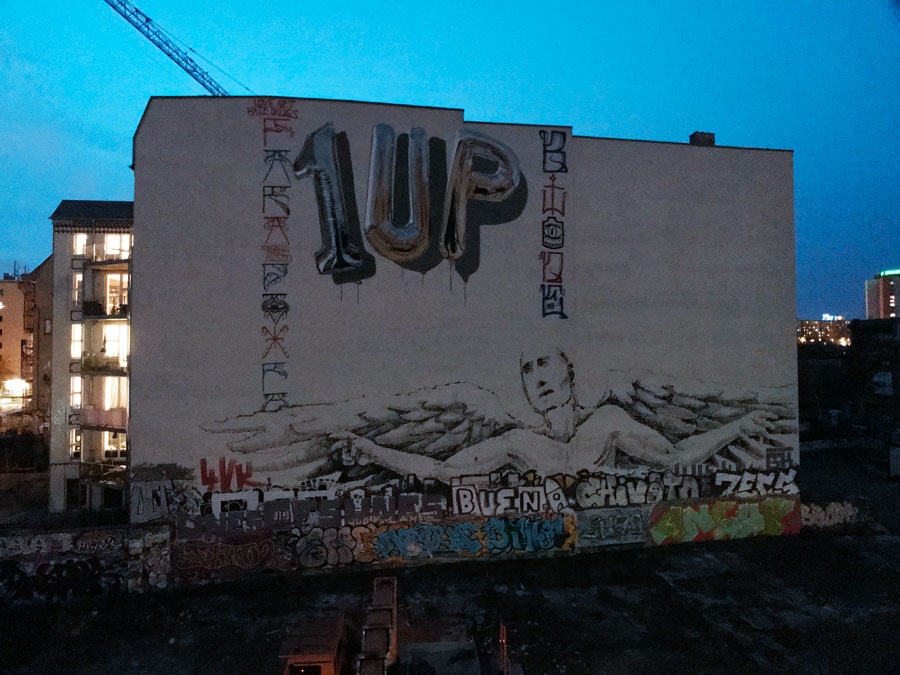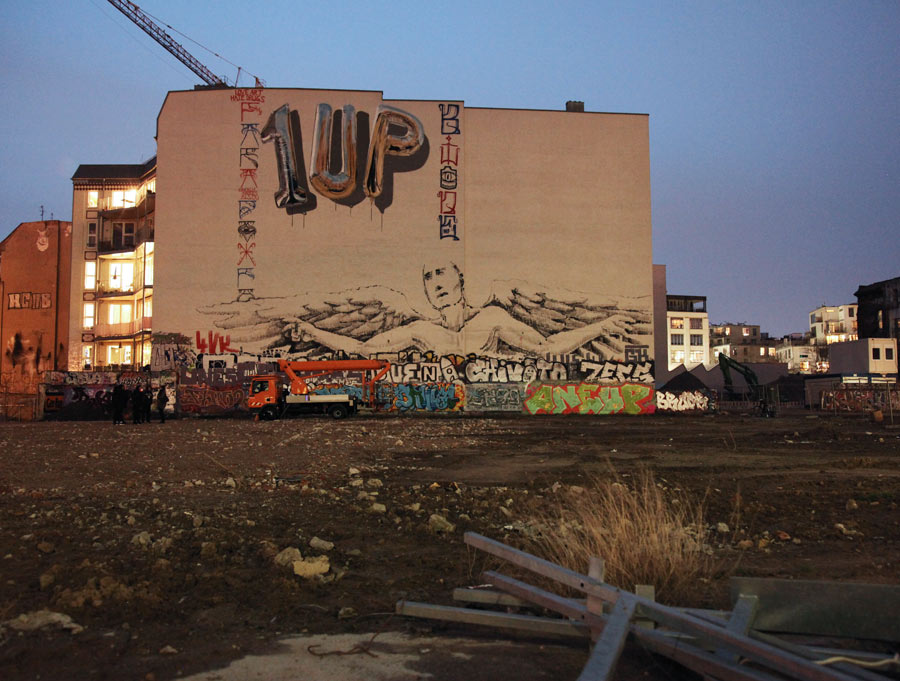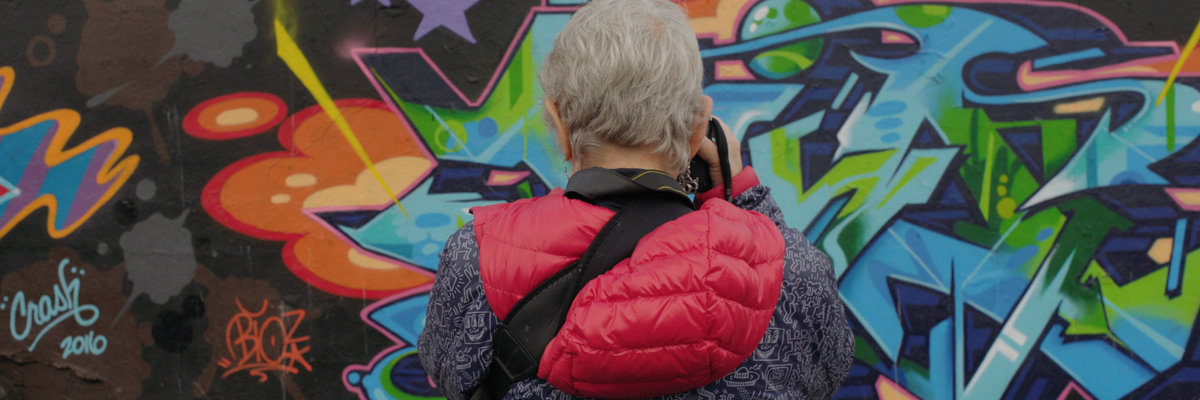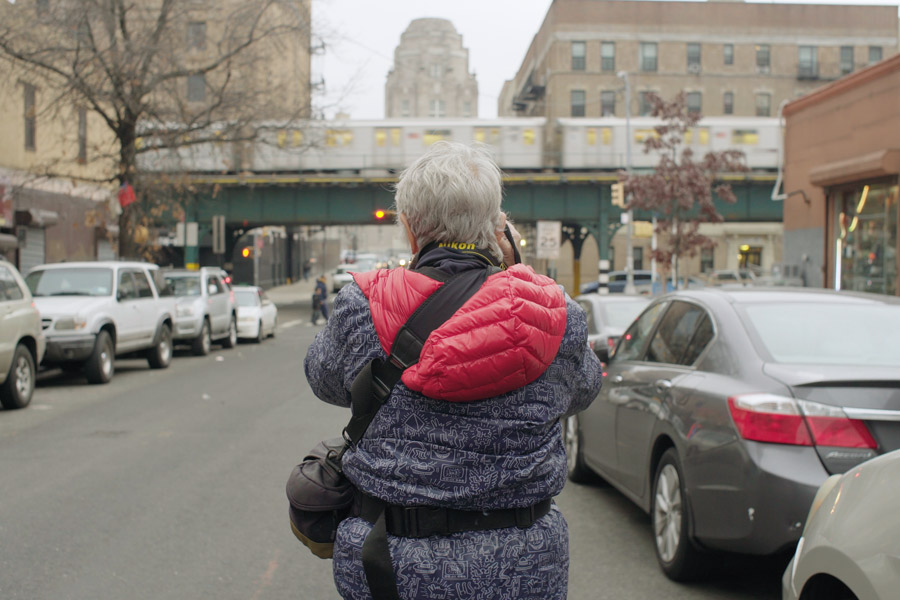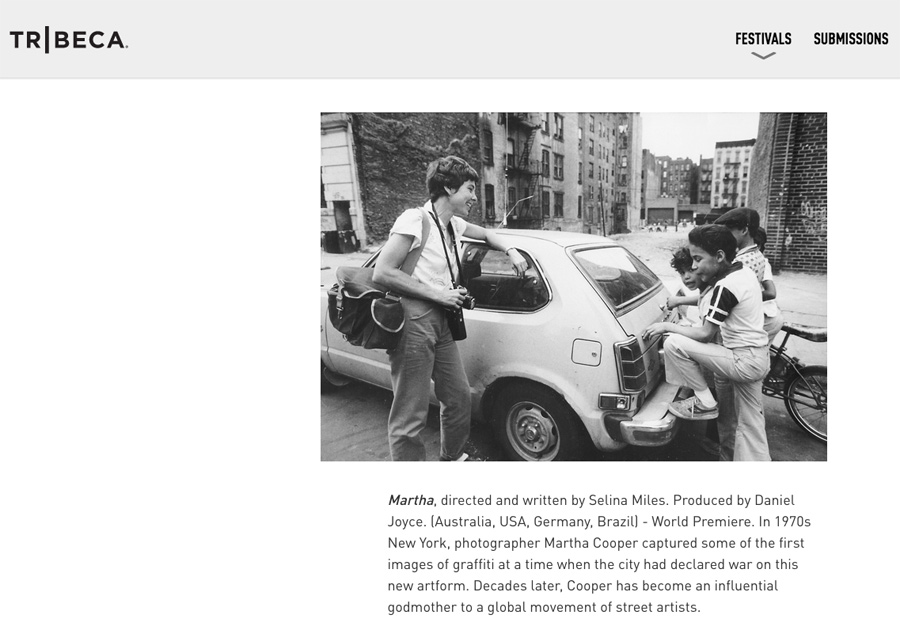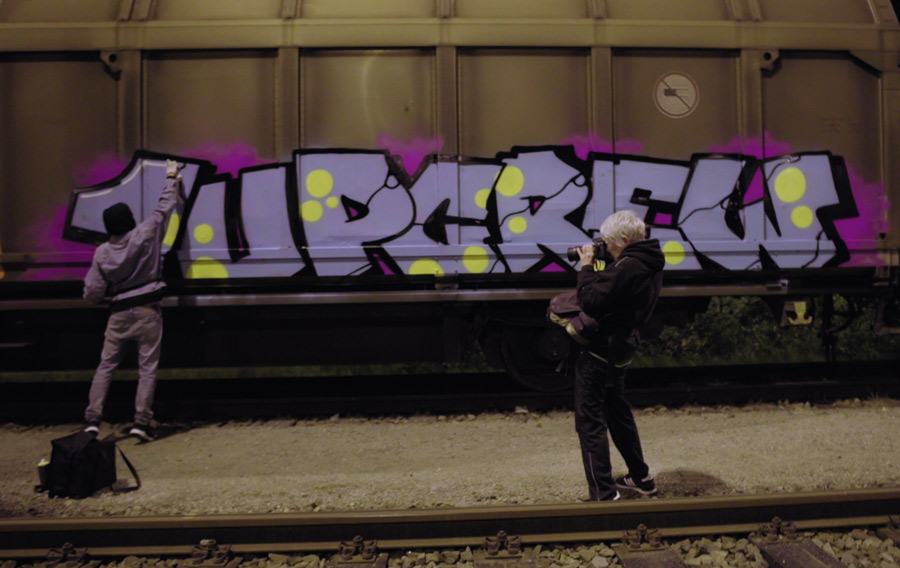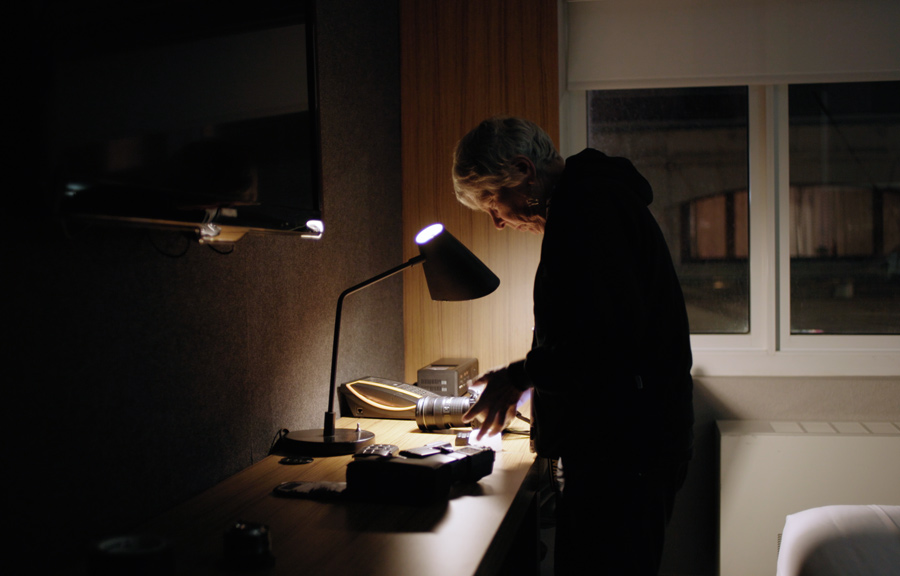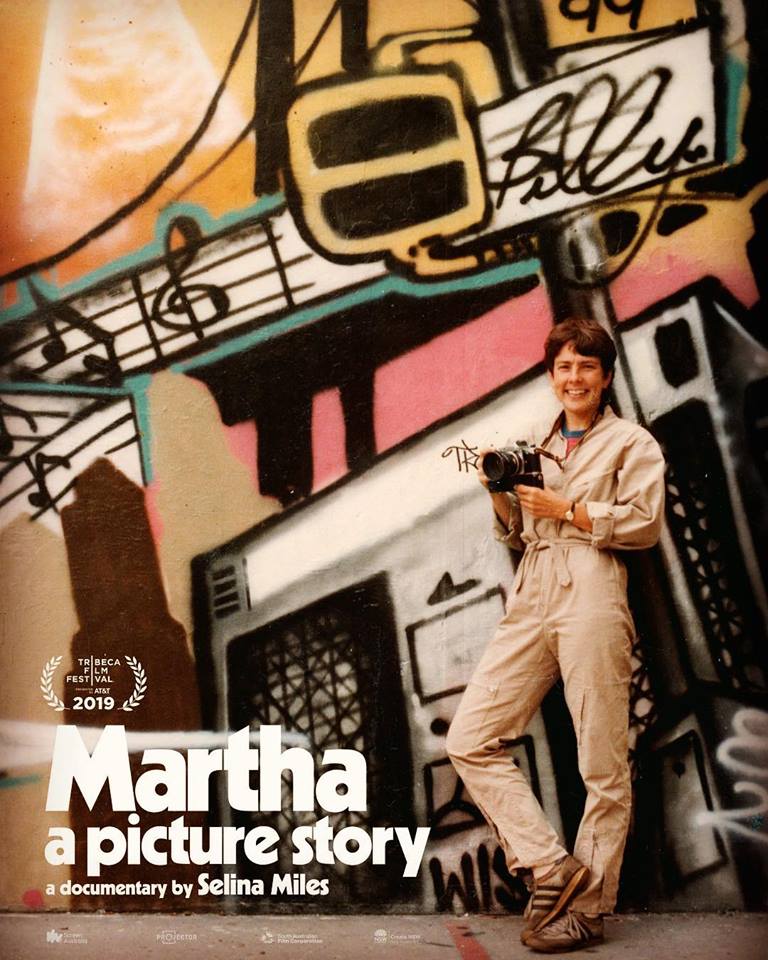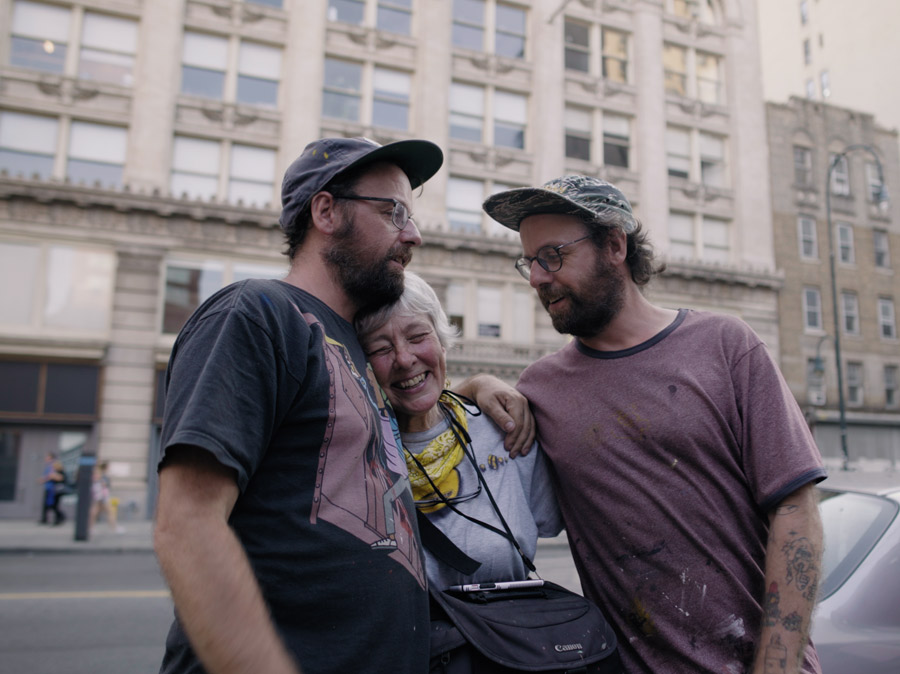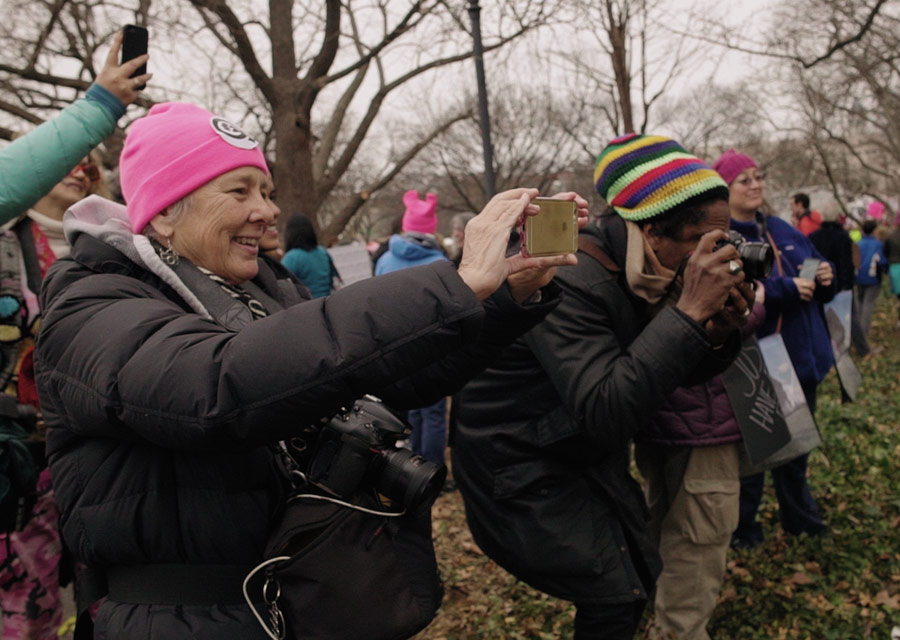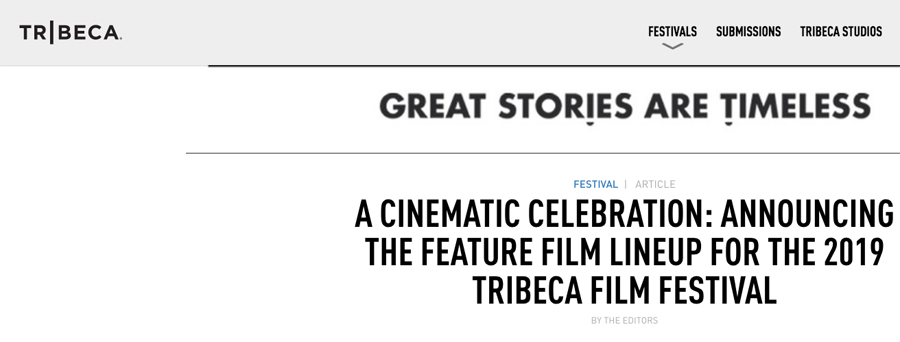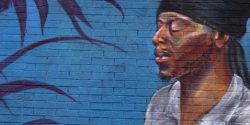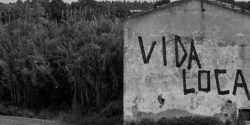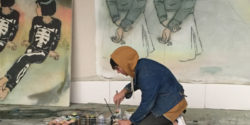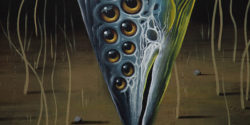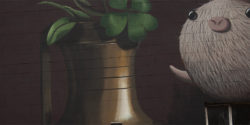Little Ricky thinks Anna Wintour is someone important whom people consider significant or iconic in popular culture, which is already a humorous supposition. In his multiple street iterations of the fashion editor, he has dressed her
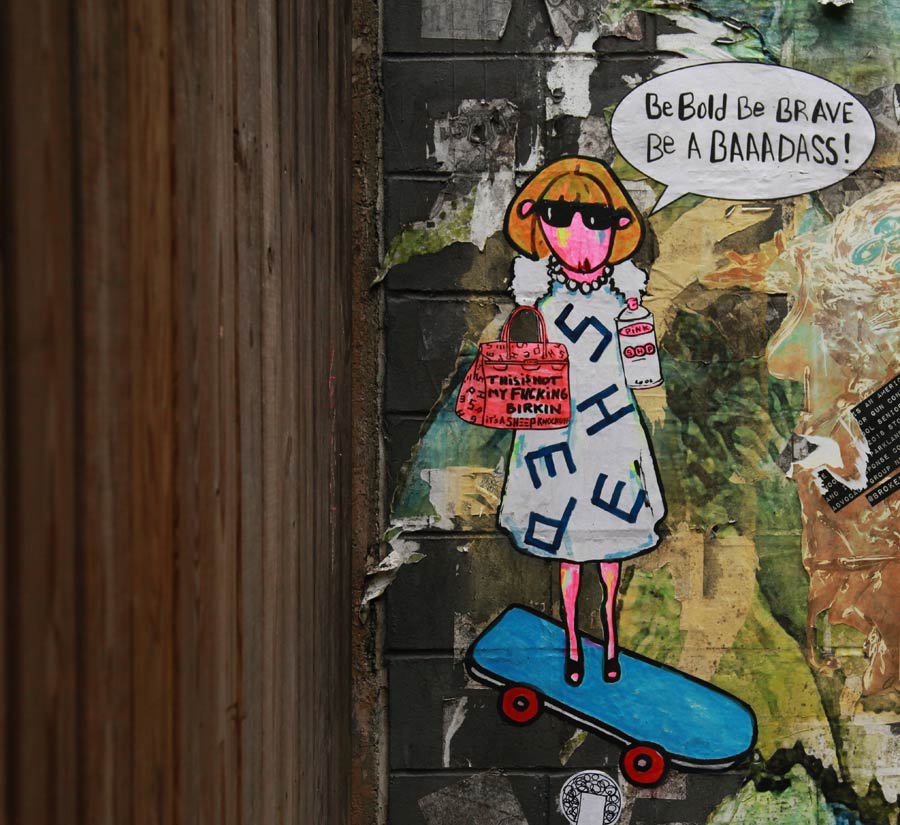
Each tiny episode of his ongoing SHEEP series may bring a perplexed smile to the average person who is looking at them while waiting for the traffic lights to change. In the case of the Wintour character preaching and prognosticating and posing, an insider joke that appeals to the fashion gatekeepers in this city, of which many have self-appointed. The question you may ask is, who’s the sheep, who’s the
A Street Art icon/brand in the making, Little Ricky’s talisman-woman of a candy pink sheep character inhabits the new strata of 20-teens Street Art that reflects the ease of social media commentary here grafted onto actual walls, the fascination we have with visually sampling pop cultural references, and the time-honored practice of lampooning with absurdity. A California-based Gen X Street Artist with uncommon discipline and work ethos in his practice, Little Ricky has been studying, developing, archiving, formulating his campaigns in the Street and gallery for the better part of a decade now.
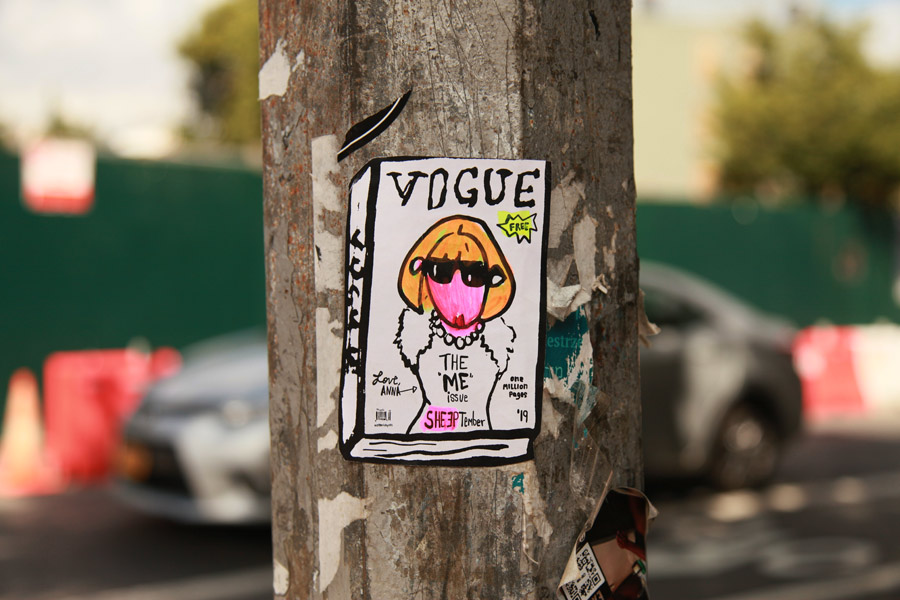
Recently in New York to sample the late-summer fragrance potpurri of pot, urine, and Italian sausages on the streets of Lower Manhattan, BSA had an opportunity to chat with Little Ricky one night when we were gallery hopping with a buddy. He talked about new art on lightposts and guard-rails, the nature of his one-off comical creations, and his deep desire to launch a Keith Haring show here next year using his ewe-inspired interpretations of Harings work and life.
Brooklyn Street Art: We’ve seen many Anna Wintour pieces recently by you on the street. How does the muse find you?
Little Ricky: I never imagined that I’d be spending a year working with Anna as my muse. It’ll be weird once the year comes to an end. But I know that SHEEP will continue to surprise me and Anna will most likely keep popping up in my work. The connection will always be there.
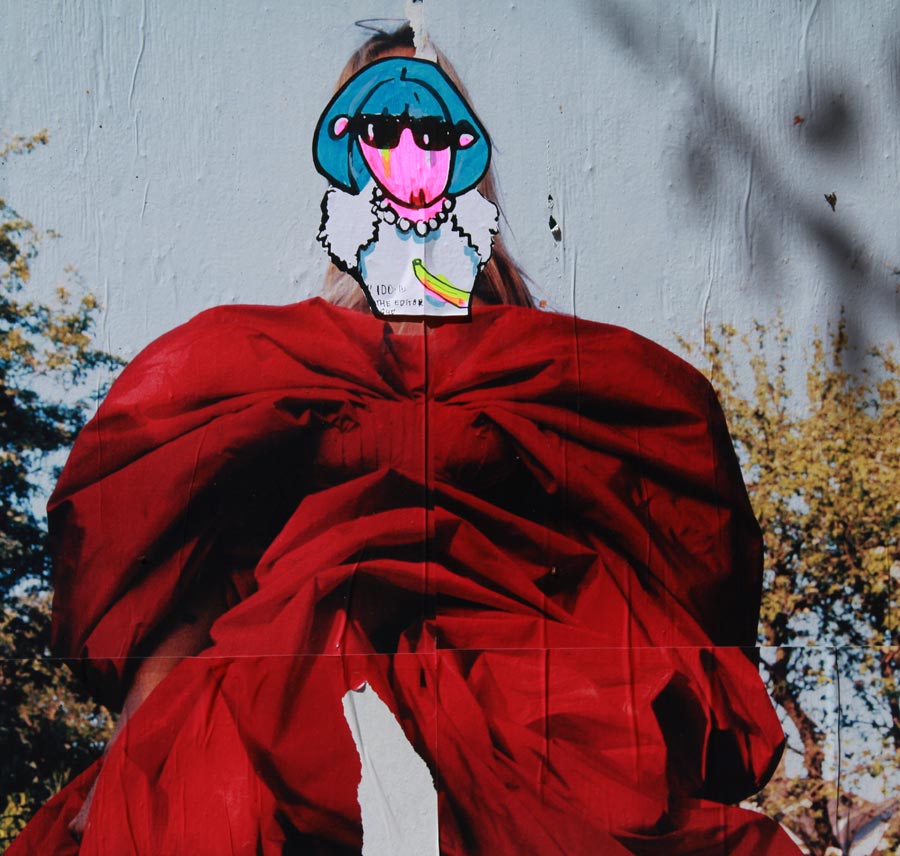
She can
Brooklyn Street Art: People are sheep, aren’t they?
Little Ricky:
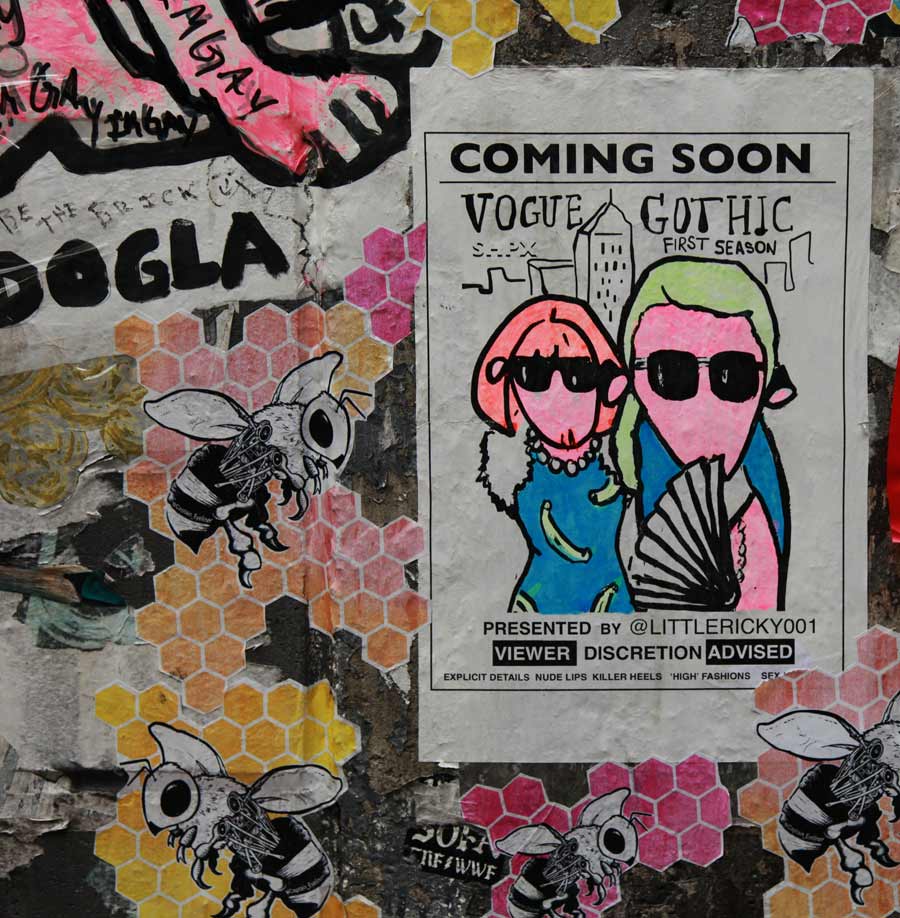
After 51 years of life and almost 7 years of working
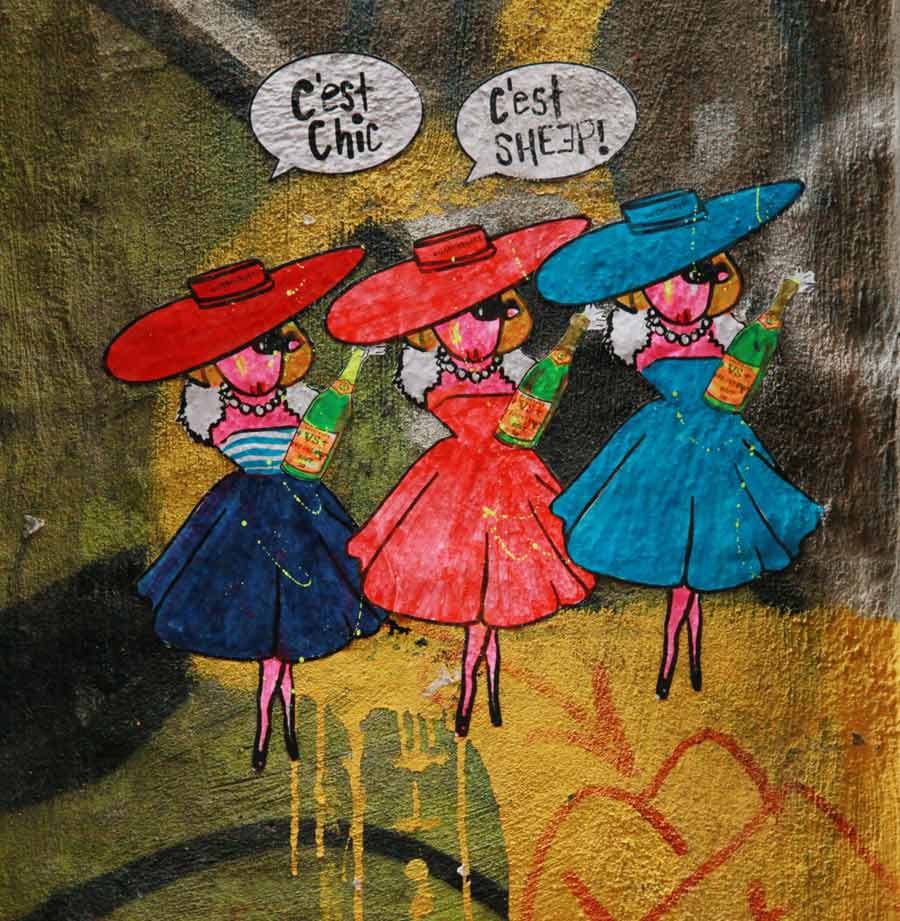
Brooklyn Street Art: Can you talk about your feelings toward Keith Haring and the impression he and his work made on you?
Little Ricky: I feel a deep connection to Keith. It goes beyond being inspired by him. I feel him alongside me like he’s guiding me along. I first came across his work in the late ’80s. The simplicity of his images struck some magic in my soul. They still do. They felt familiar. Until now, I didn’t realize that Keith’s passing in February of 1990 coincided with my coming out the month before. Weird! Maybe he passed the torch along. My first boyfriend who I met in January of 1990 even drove Keith around SF the year before. I wasn’t into the art scene in any way, but I started taking art classes while at UC Berkeley. I imitated his lines and figures, but there was no ‘me’ in what I was creating.
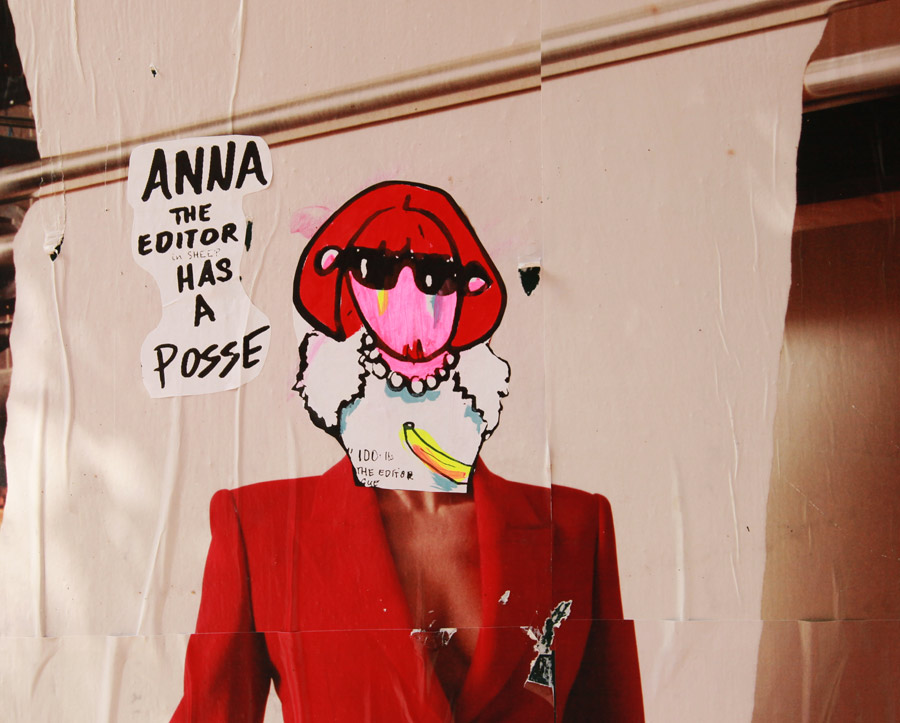
With SHEEP, almost 30 years later, I can see his influence in my work, always will. But now I know, that I’m creating a world of my own with a little touch of his magic. It’s been an effortless process. For that, I give some credit to Keith. When the idea for SHEEP came to mind in 2013, I didn’t know what I’d be creating. I purchased a toy sheep and started doodling. After a while, a shape took form and it looked familiar like I had seen it before.
Thinking about this now, I realize that it was like finding my own Haring ‘baby.’ I wasn’t looking for it, but when I saw it, I knew it was the beginning of everything. P.S. Last year in May, I did a 31-day study I called SHEEPDOG. Each day, I painted an image combining Keith’s dog and my SHEEP. I was surprised that I hadn’t thought of it earlier. It was magical seeing it evolve.
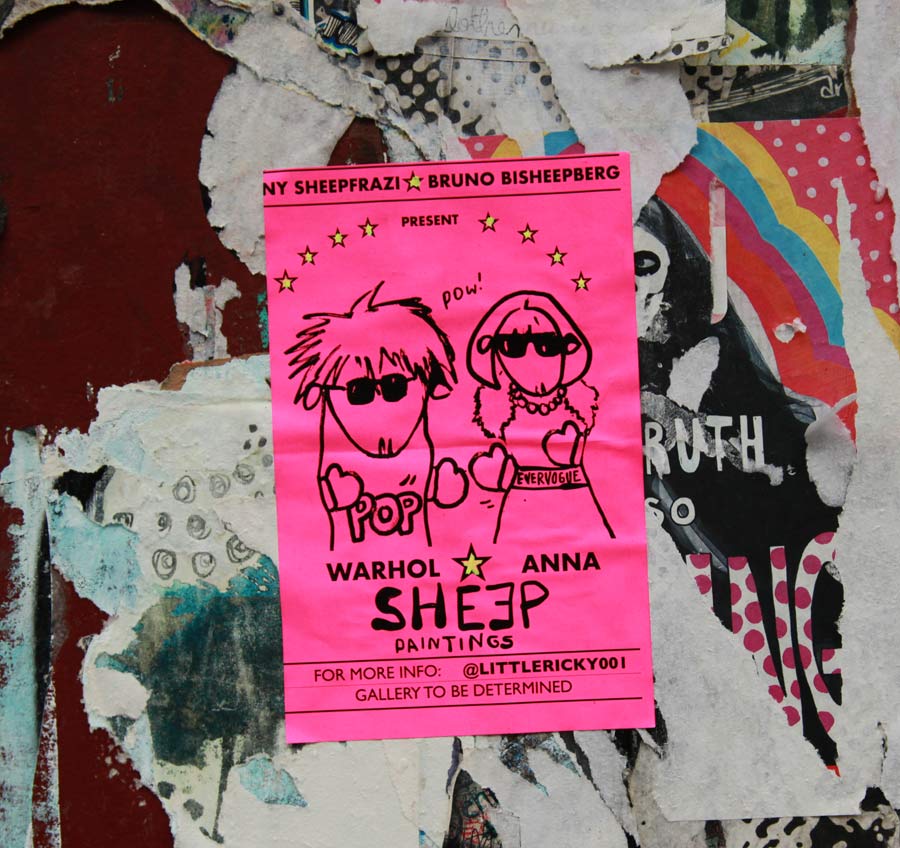
Brooklyn Street Art: Recently Dusty Rebel has been traveling around the world speaking with and filming Street Artists from the GLBTQ community. Why is it important to know if a graffiti writer or Street Artist is GLBTQ?
Little Ricky: As I get older, labels have become less important. I jokingly tell my sister that I’m the ‘+’ in the GLBTQ+ If I’m to label myself, it’s definitely queer over gay. I like
Unknowingly, I’d even censor myself so that they weren’t too ‘gay.’ That all changed after the Orlando shootings when I was reminded of the importance of living out loud and proud. But once I started meeting the artists, I came to find out that no one cared about how I identified or if the sheep were gay or not. All that mattered was that I was getting up and they loved what I was doing. Meeting all these artists, queer or not, has been one of the greatest parts of working on SHEEP. So, it’s not
Once I started, other than HomoRiot, I wasn’t aware of anyone else. It took me a few years before we eventually met up. Now, I have a new community of peeps that I get to call friends. I’m excited to meet many more along the way. I feel grateful to Dusty and all his work. He’s shedding light on
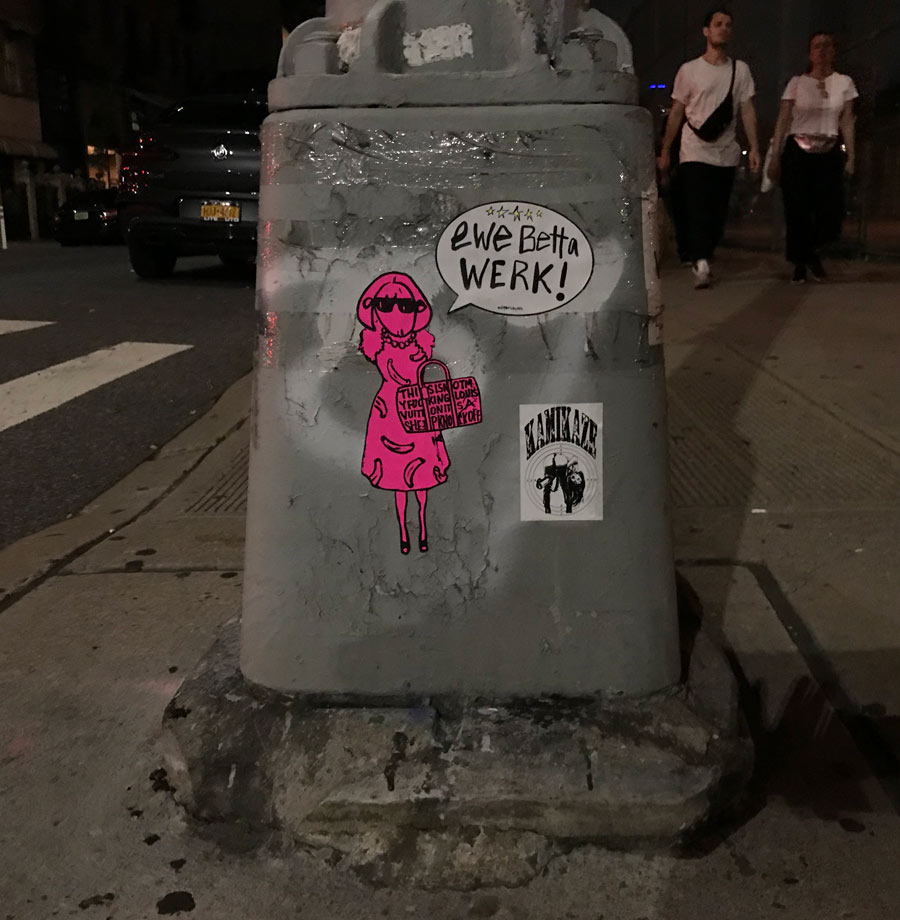
Brooklyn Street Art: Which city is more fun for Street Art right now?
Little Ricky: As much as I love my beloved city of LA, I feel like I’m living ‘in’ art when I’m in NYC. Art’s everywhere! Aside from SHEEP, walking is a great passion and there’s no better city than NY to combine my two loves. When I was there recently, I put in 20 miles in one day. The opportunity to paste-up SHEEP is everywhere and anywhere. LA’s different that way. Even though I do walk a lot and I paste-up wherever I go, it’s not the same. It’s very random. Plus you’re not going to see my work
When it comes to the queer art community, street or not, I often wondered if my work didn’t fit in because it wasn’t erotic or specifically depicting a ‘queer’ image/message. But I now know, that regardless, they’re queer and they’re pink! It’s in the heart and soul of
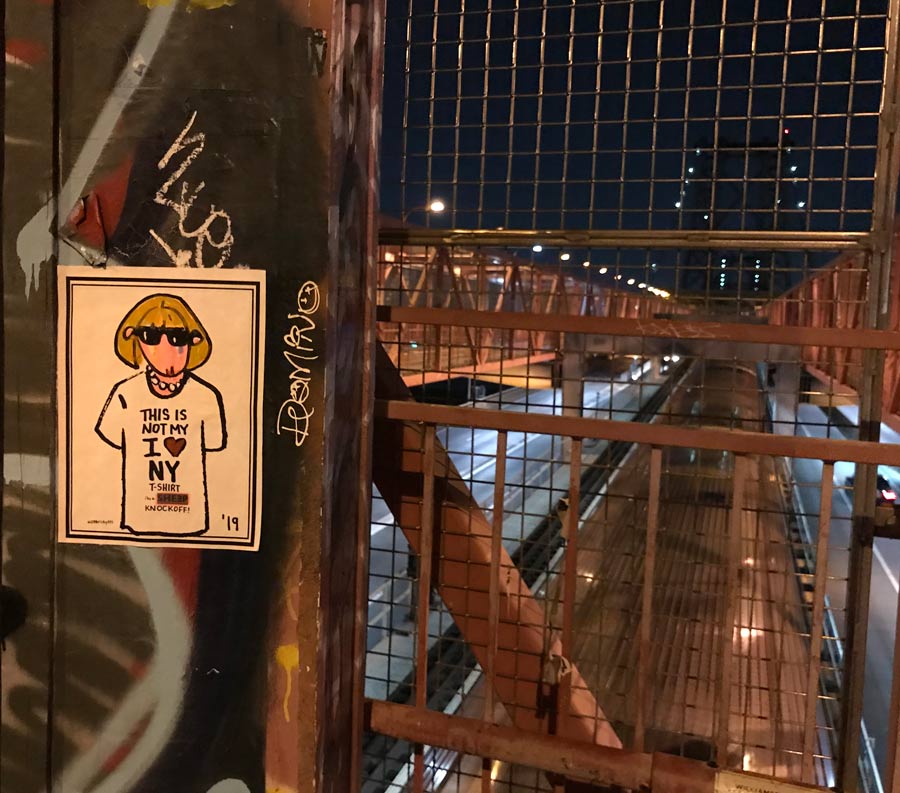
Brooklyn Street Art: In what way is your work political? Is it commentary? Critique?
Little Ricky: This was a tough question. I don’t see it as being overtly political or even commentary. There are some pieces that may be so, but overall they’re expressions of joy. I keep it simple. If you smile or laugh out loud when finding my pieces on the street, I know I’ve done my job. I often laugh out loud when creating them. There’s such silliness. For example, the idea of Anna Wintour as a pink sheep in roller skates makes me laugh. When I began the series, they started off as ‘gay’ sheep and now they’re more a symbol about a feeling.
I’ve always felt different, it goes beyond my sexuality. As I age, I feel more and more different. And the more different I feel, the more connected I am. So the SHEEP being out and about, regardless of the character or message, are a symbol of that feeling that we all feel. Being different, feeling different is a beautiful thing!
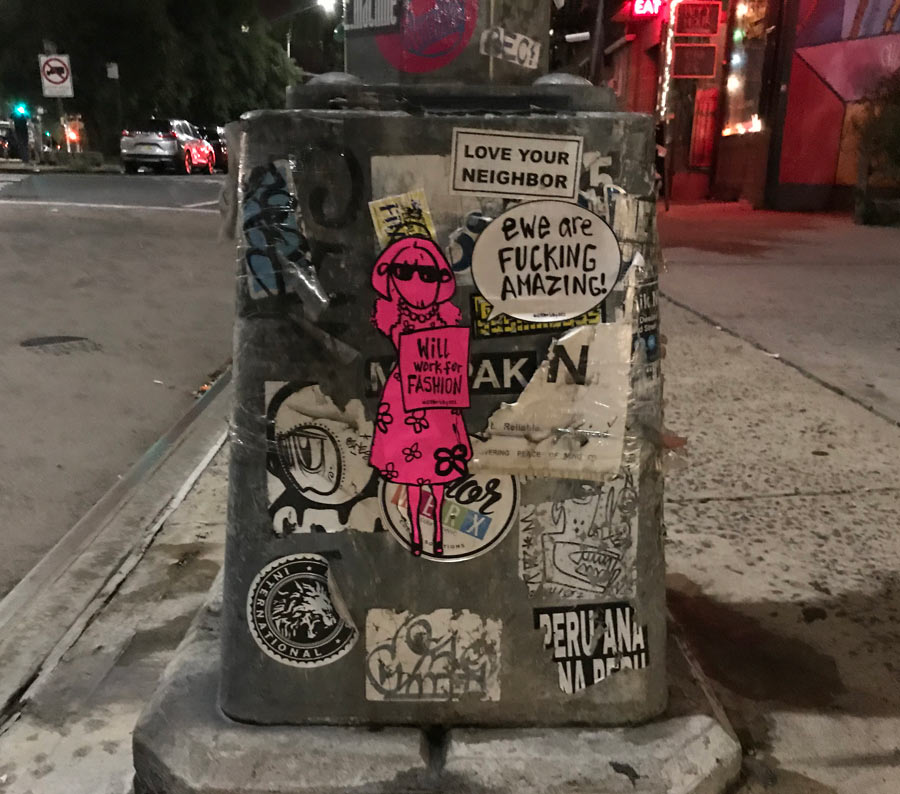
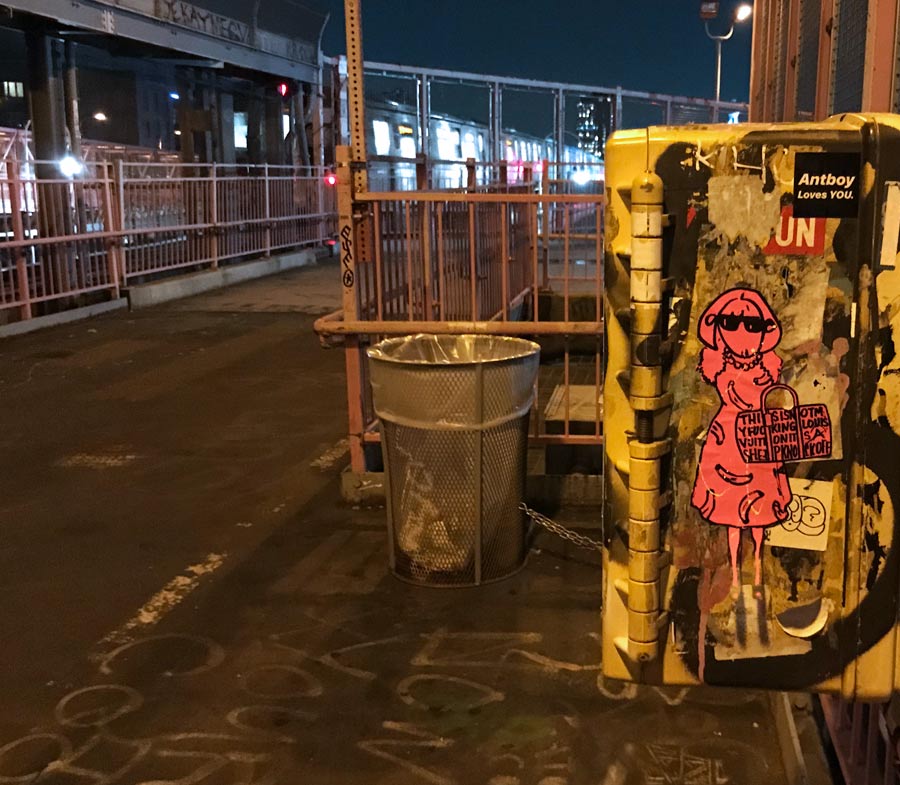
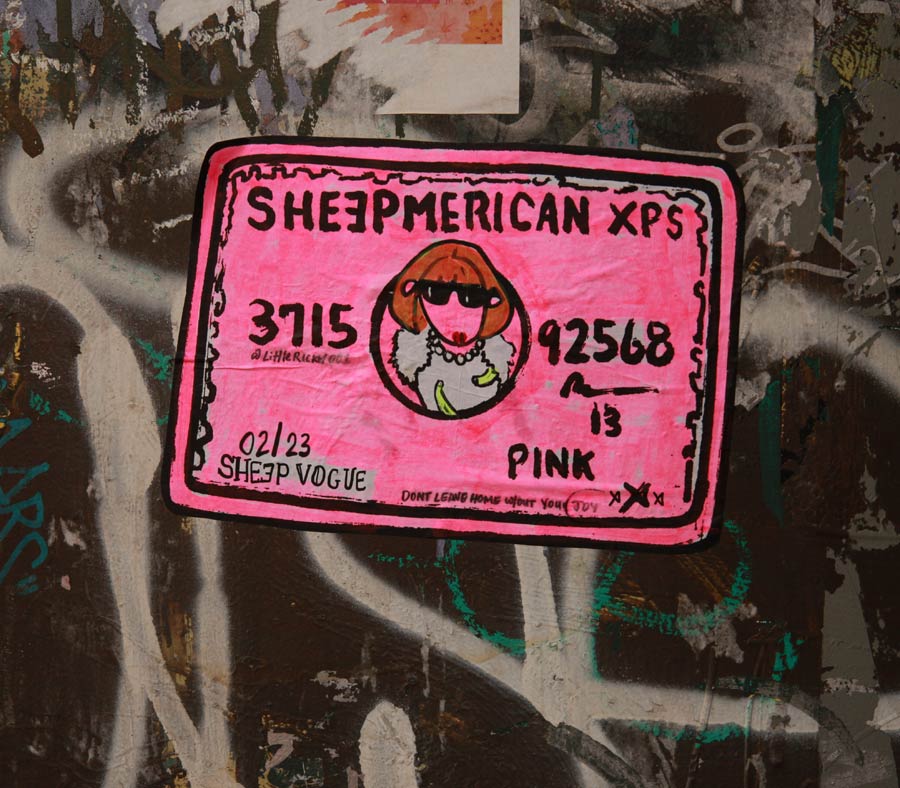
 BROOKLYN STREET ART LOVES YOU MORE EVERY DAY
BROOKLYN STREET ART LOVES YOU MORE EVERY DAY